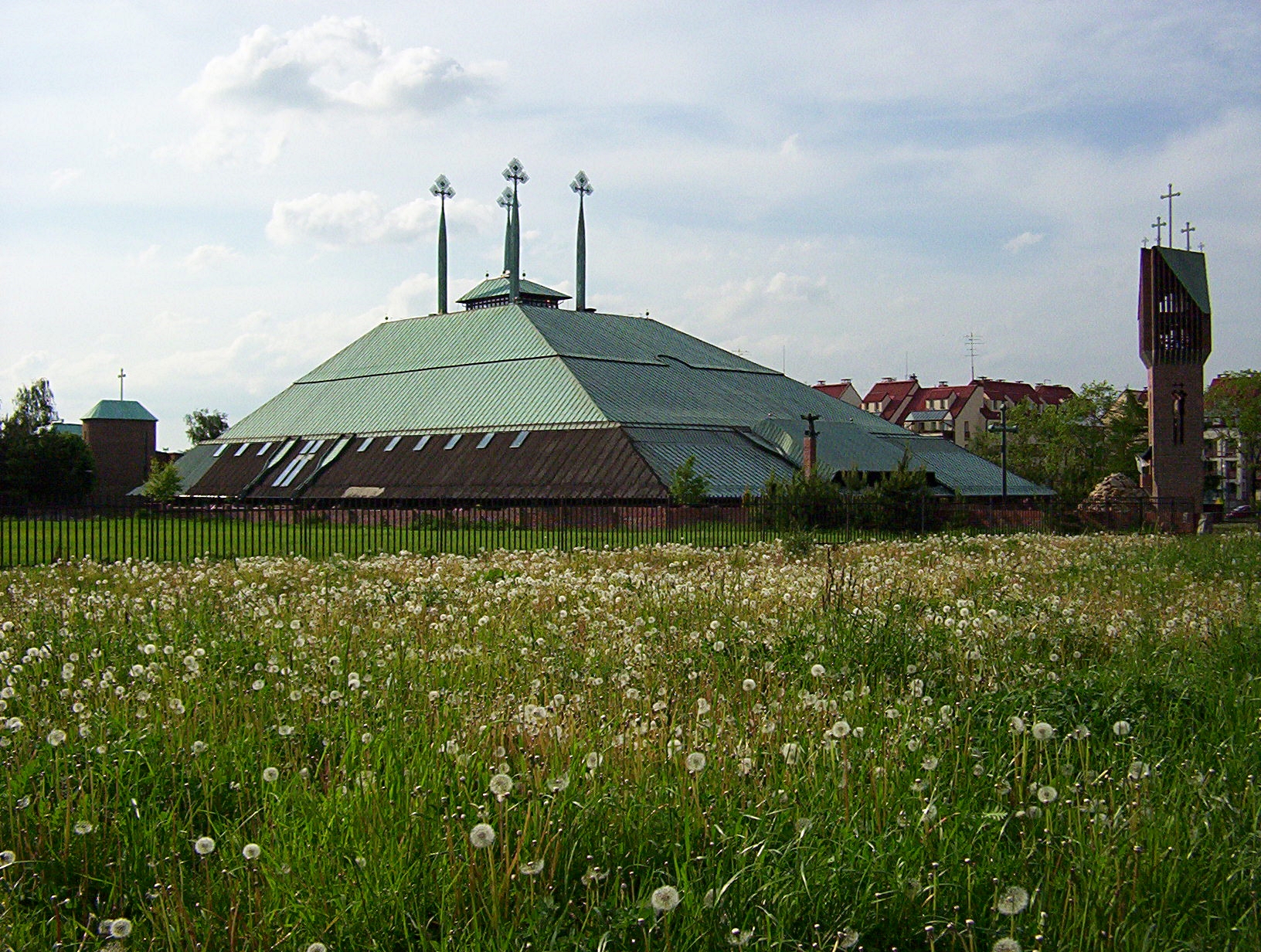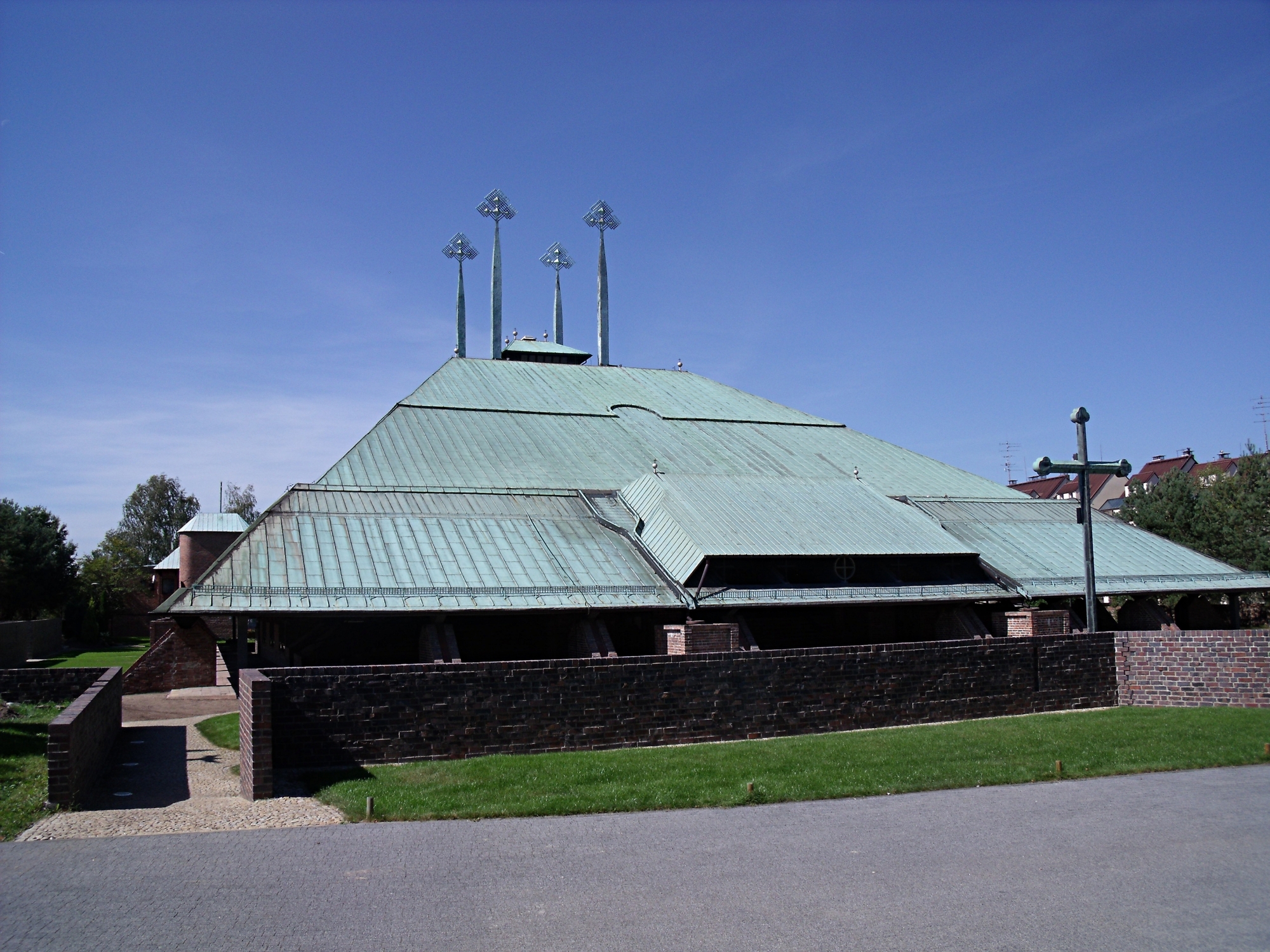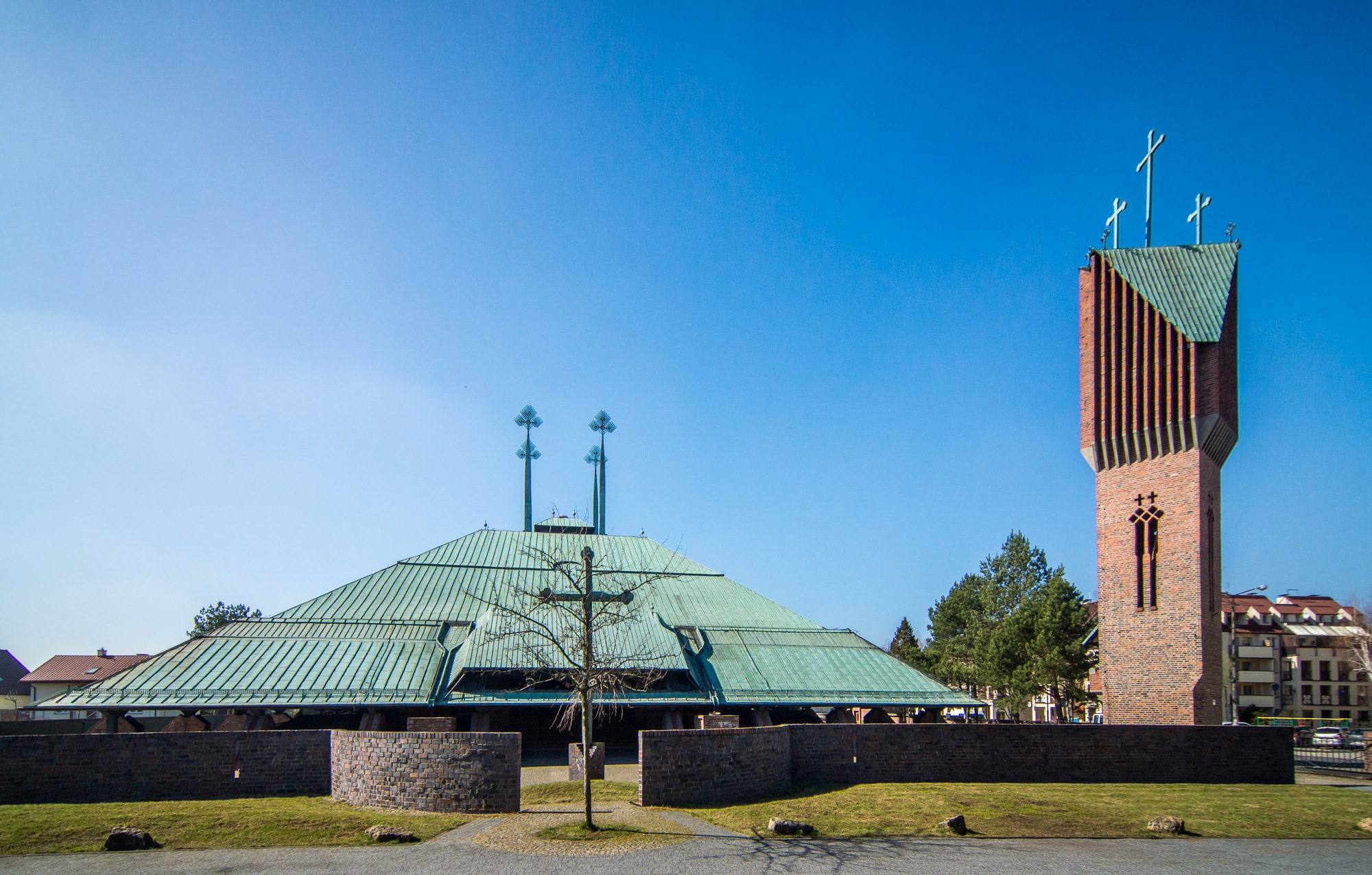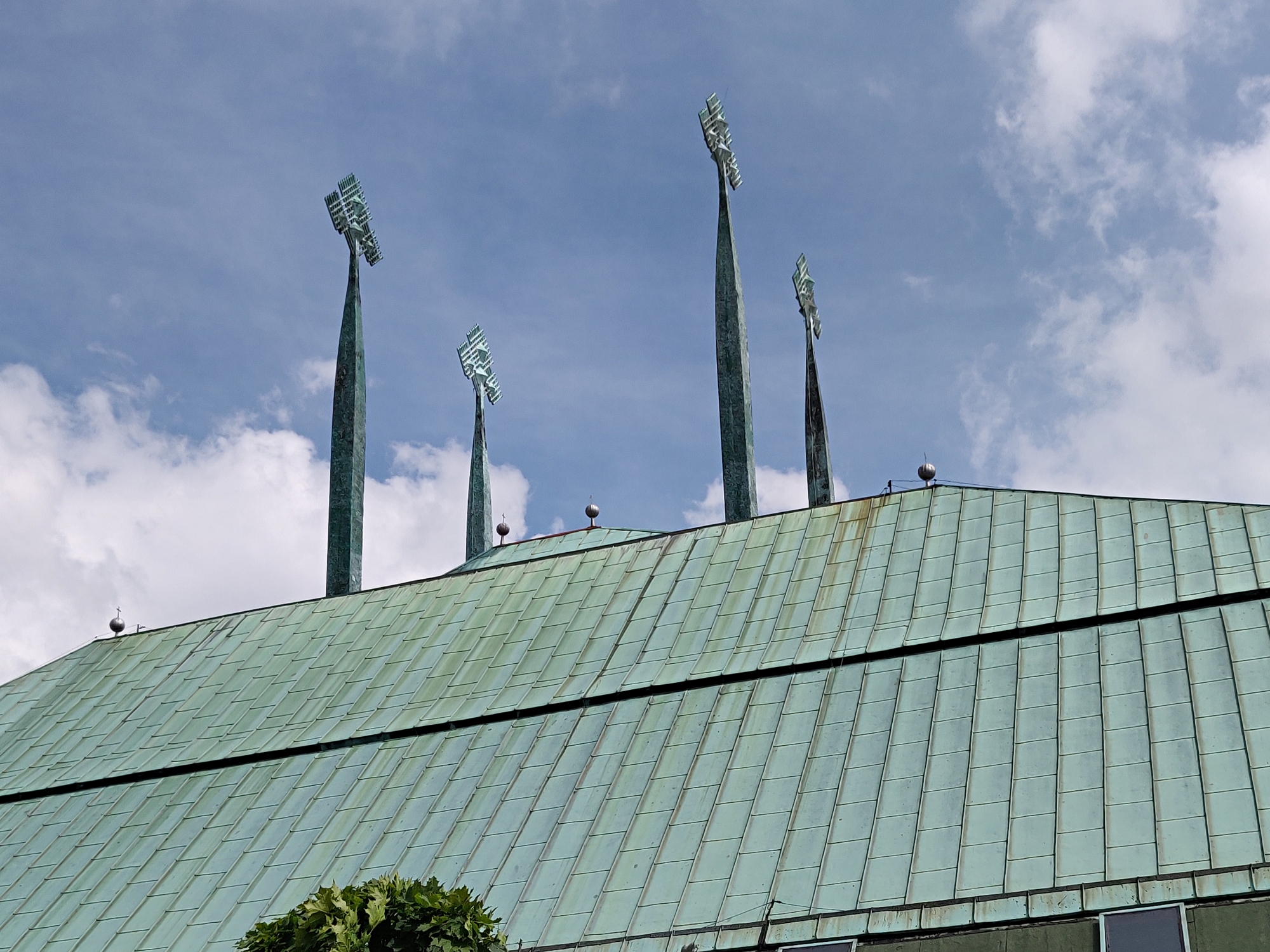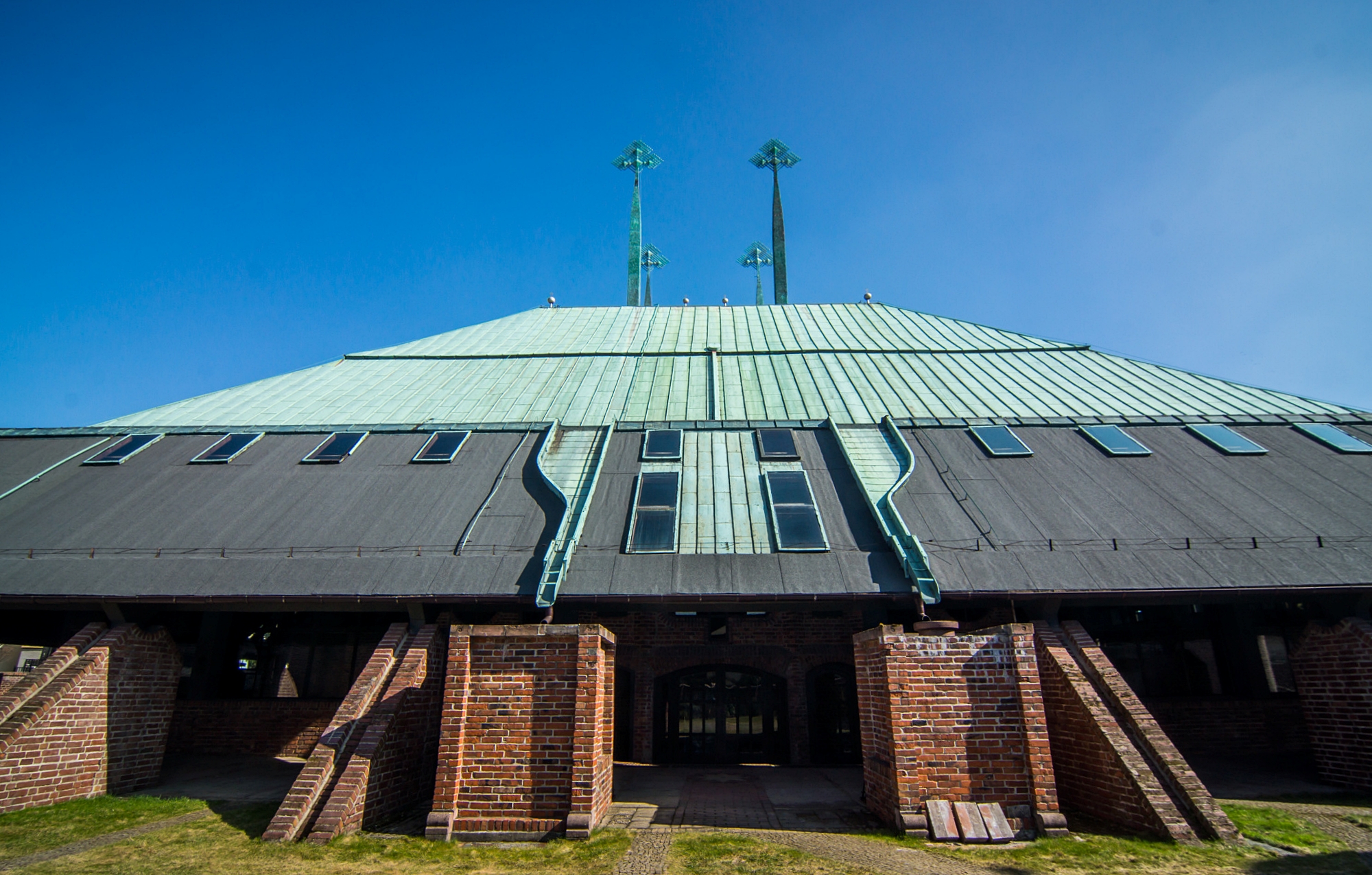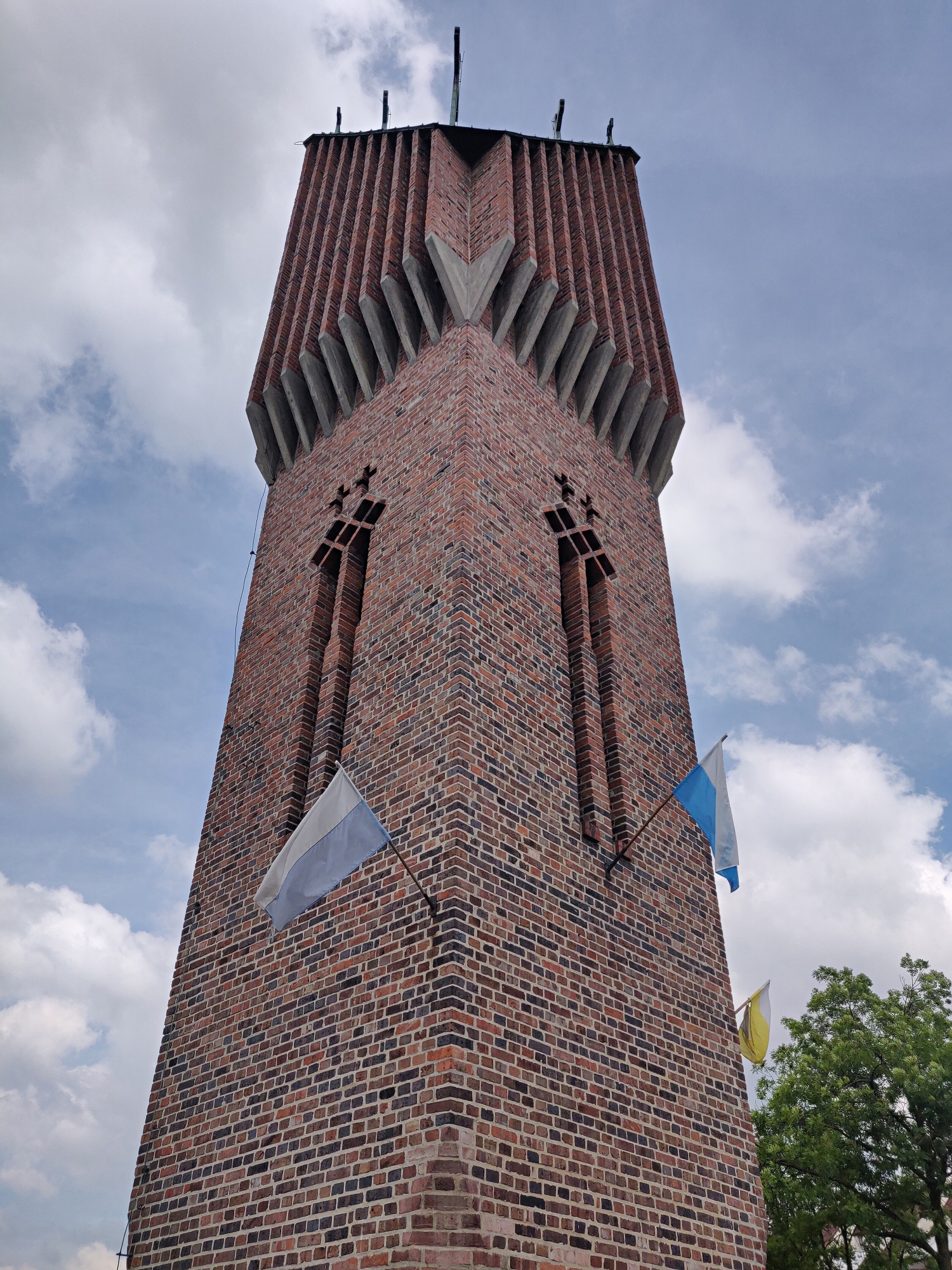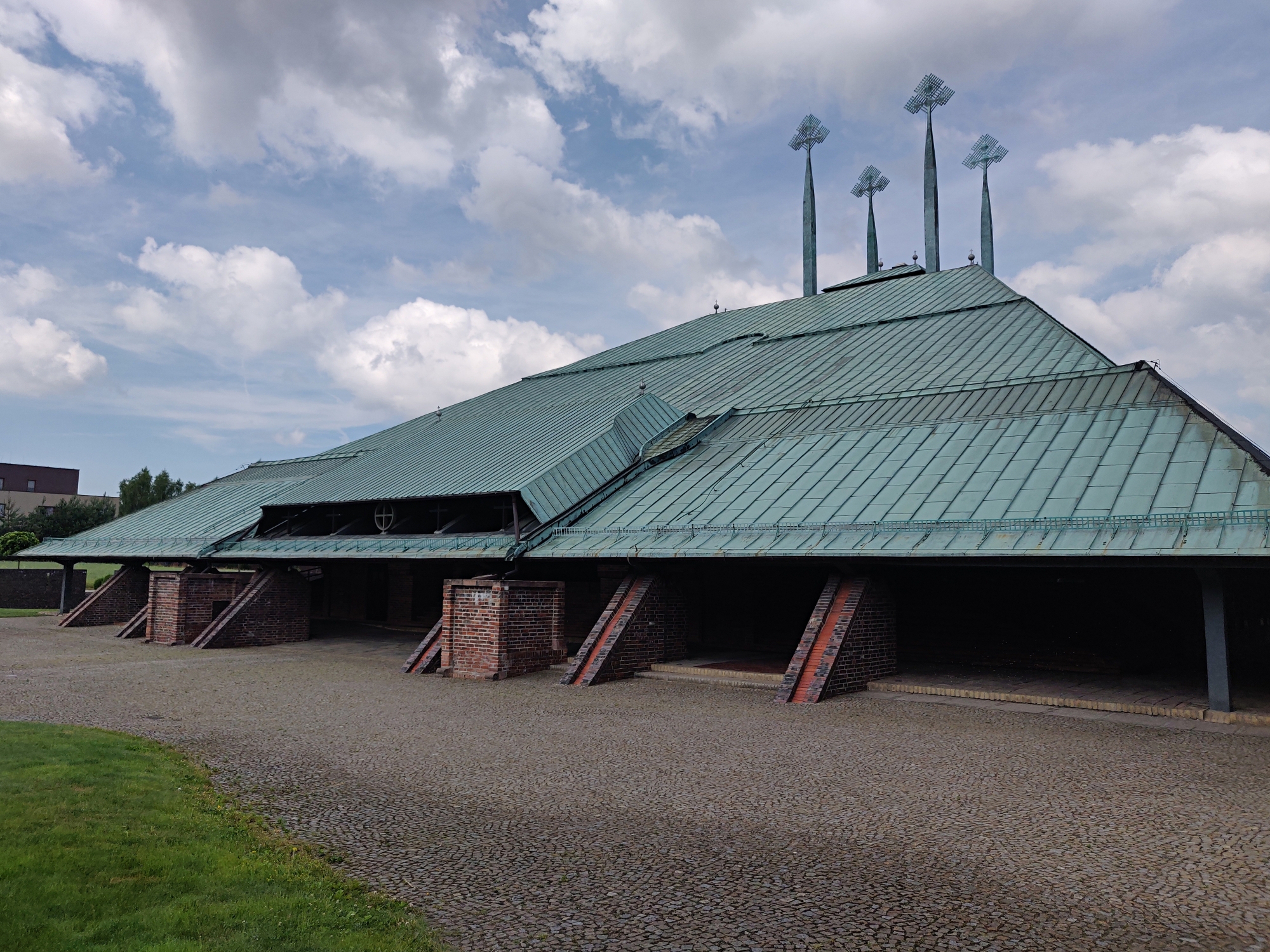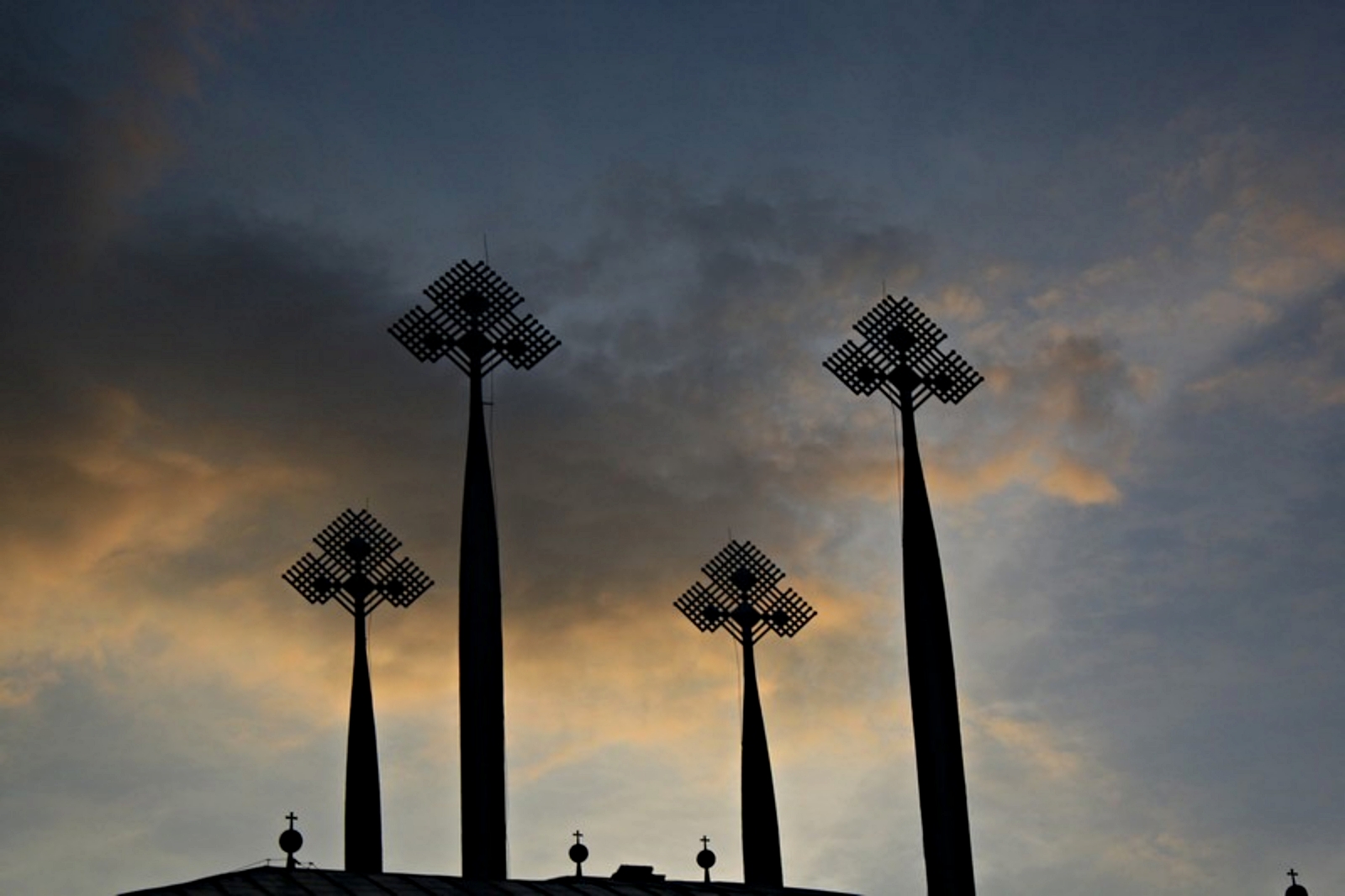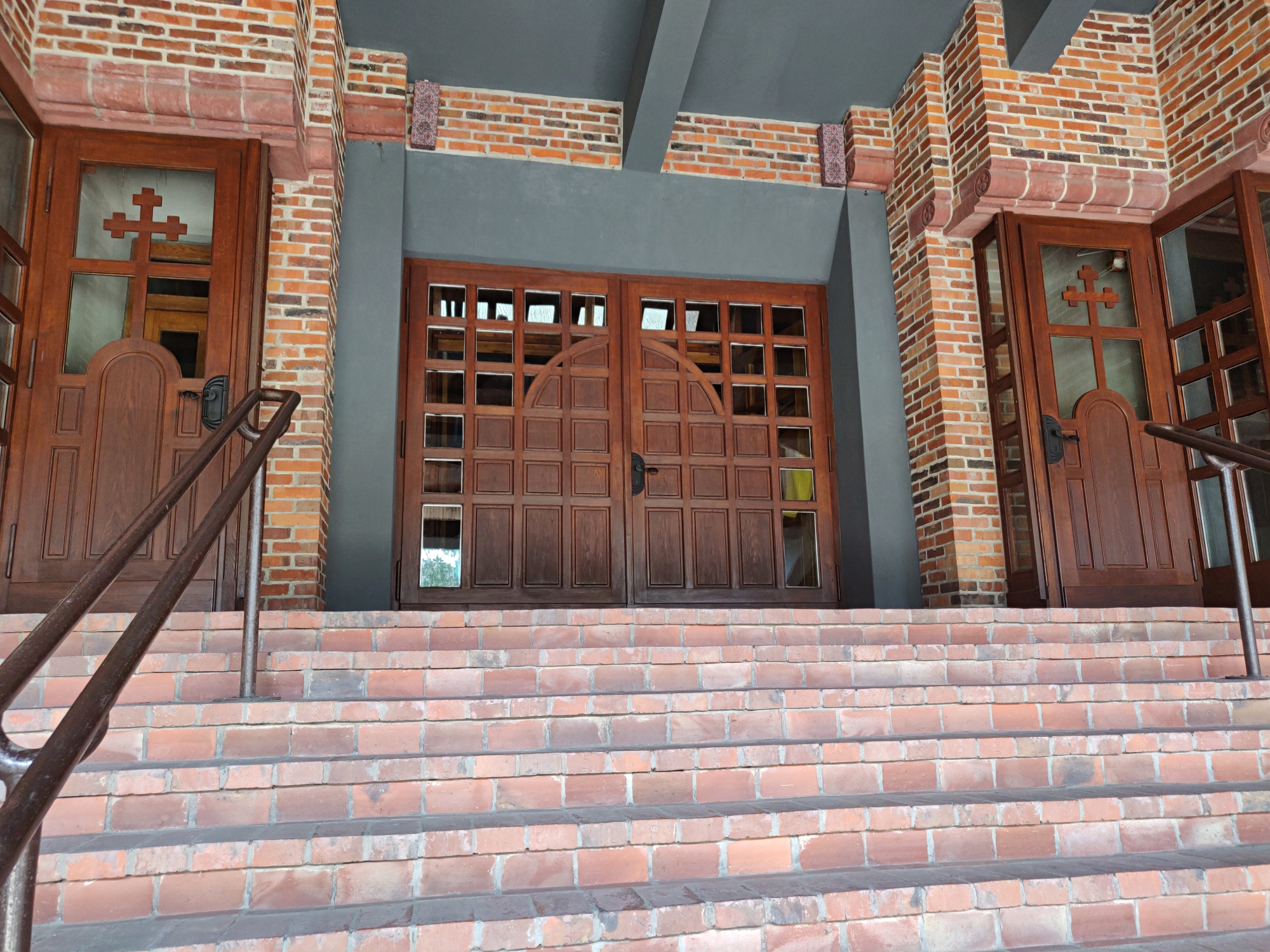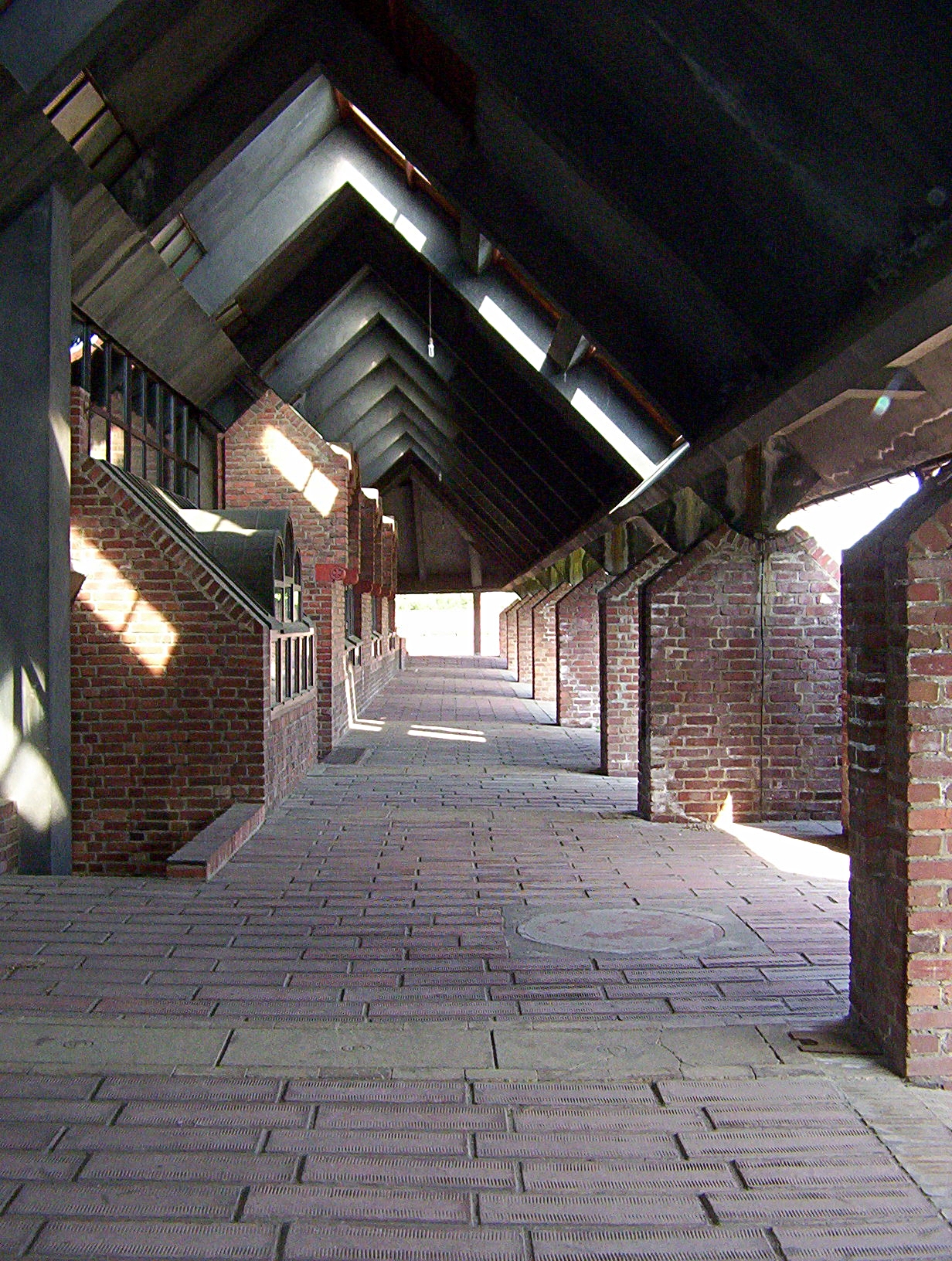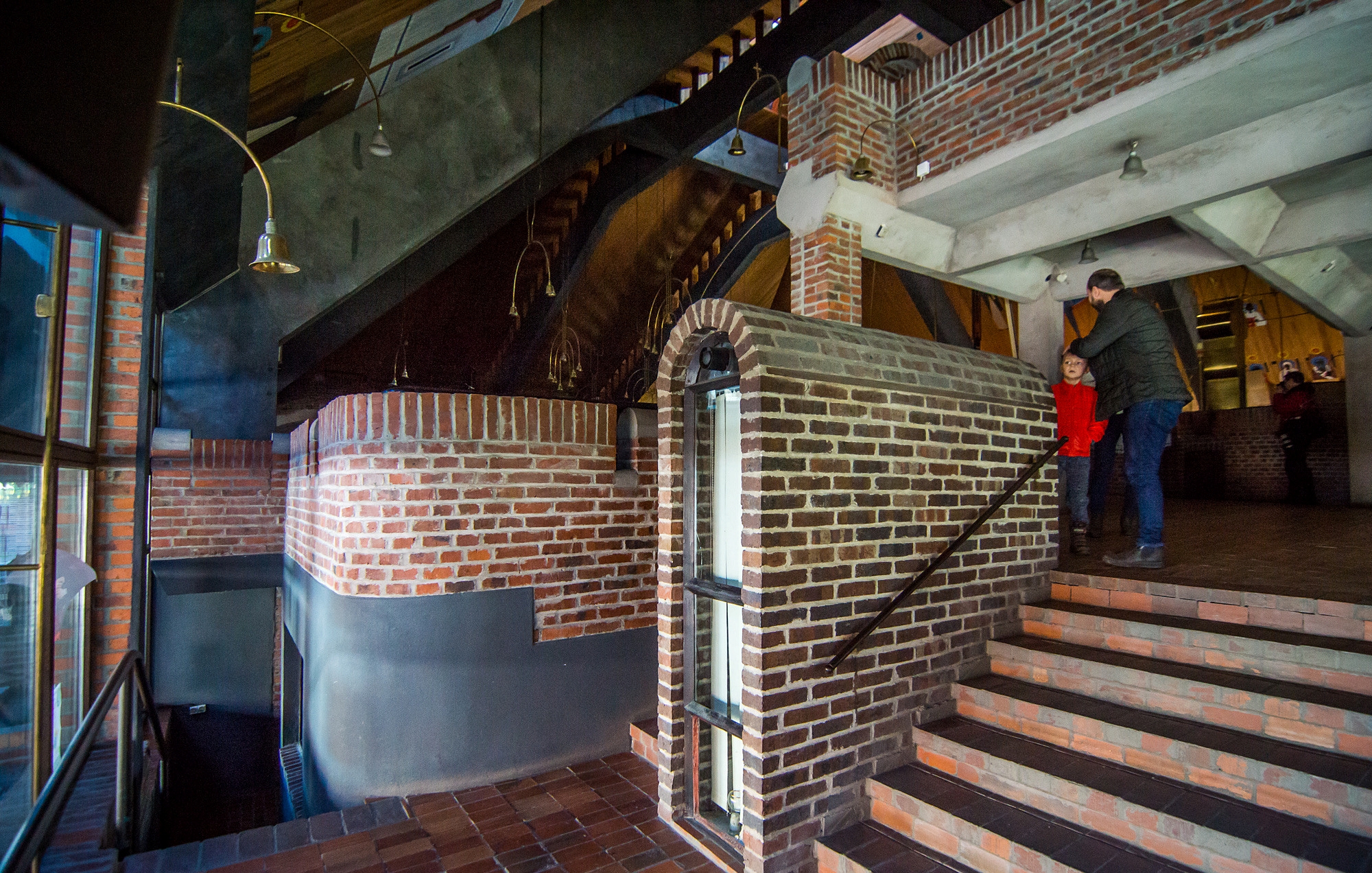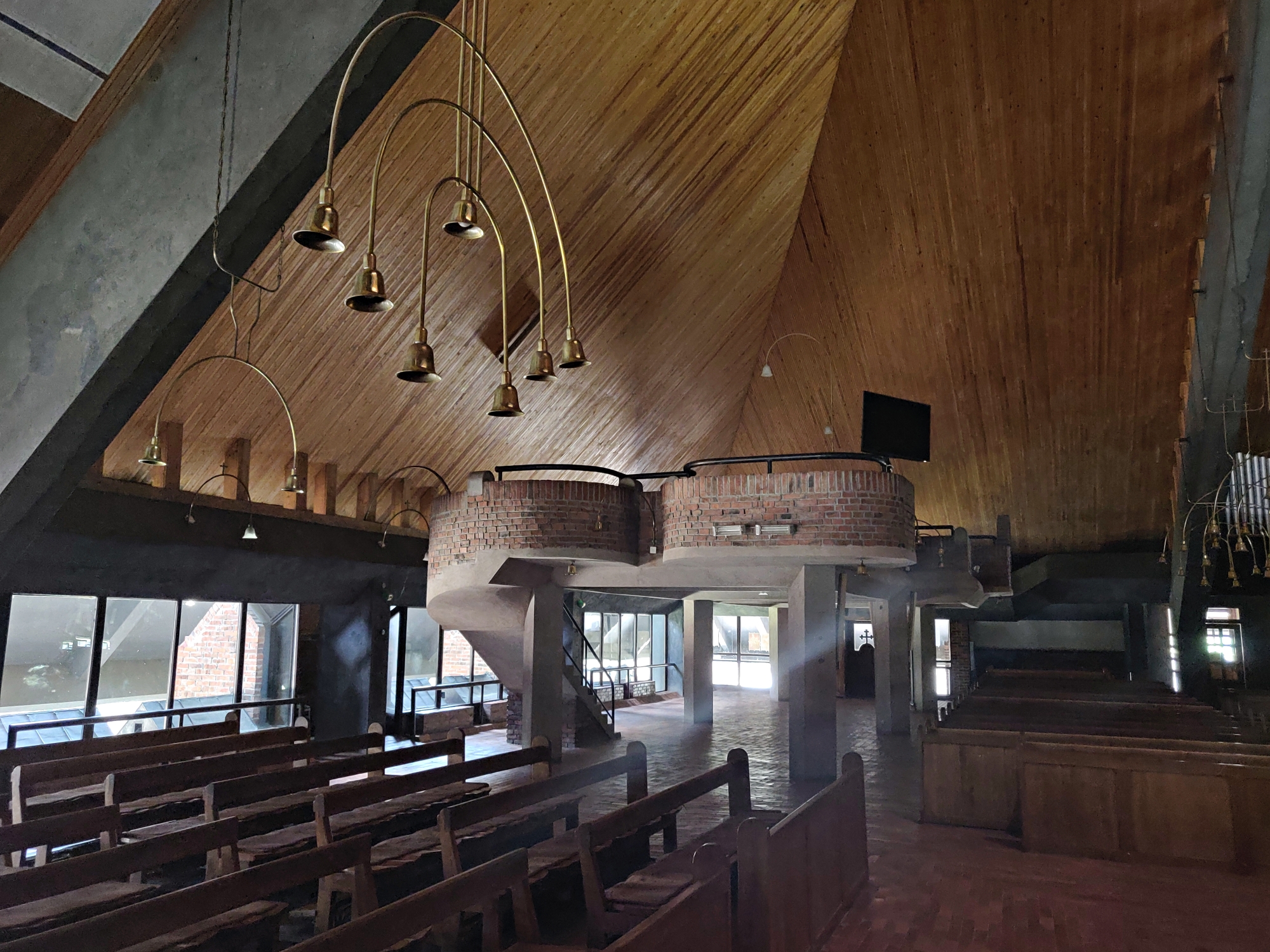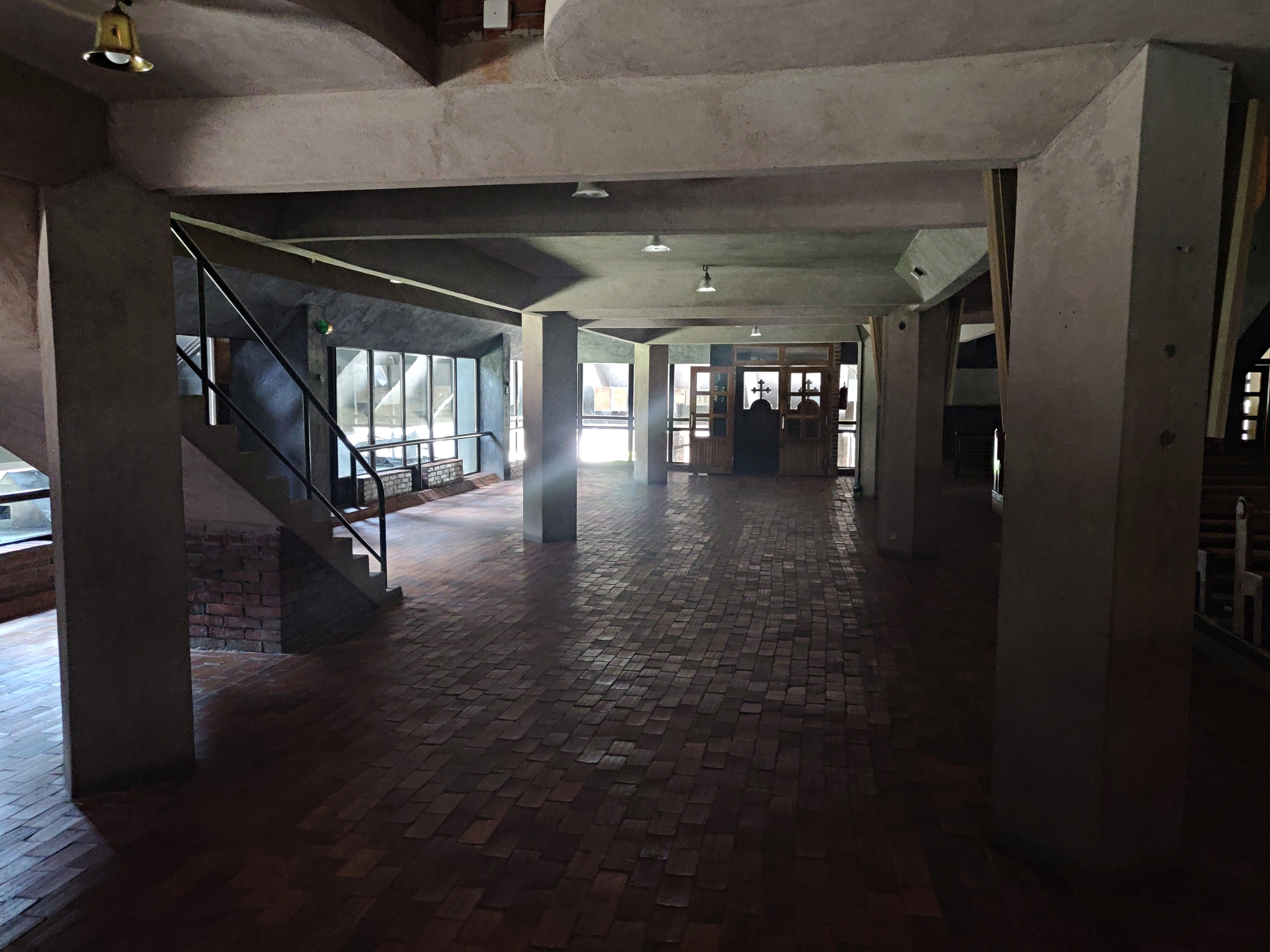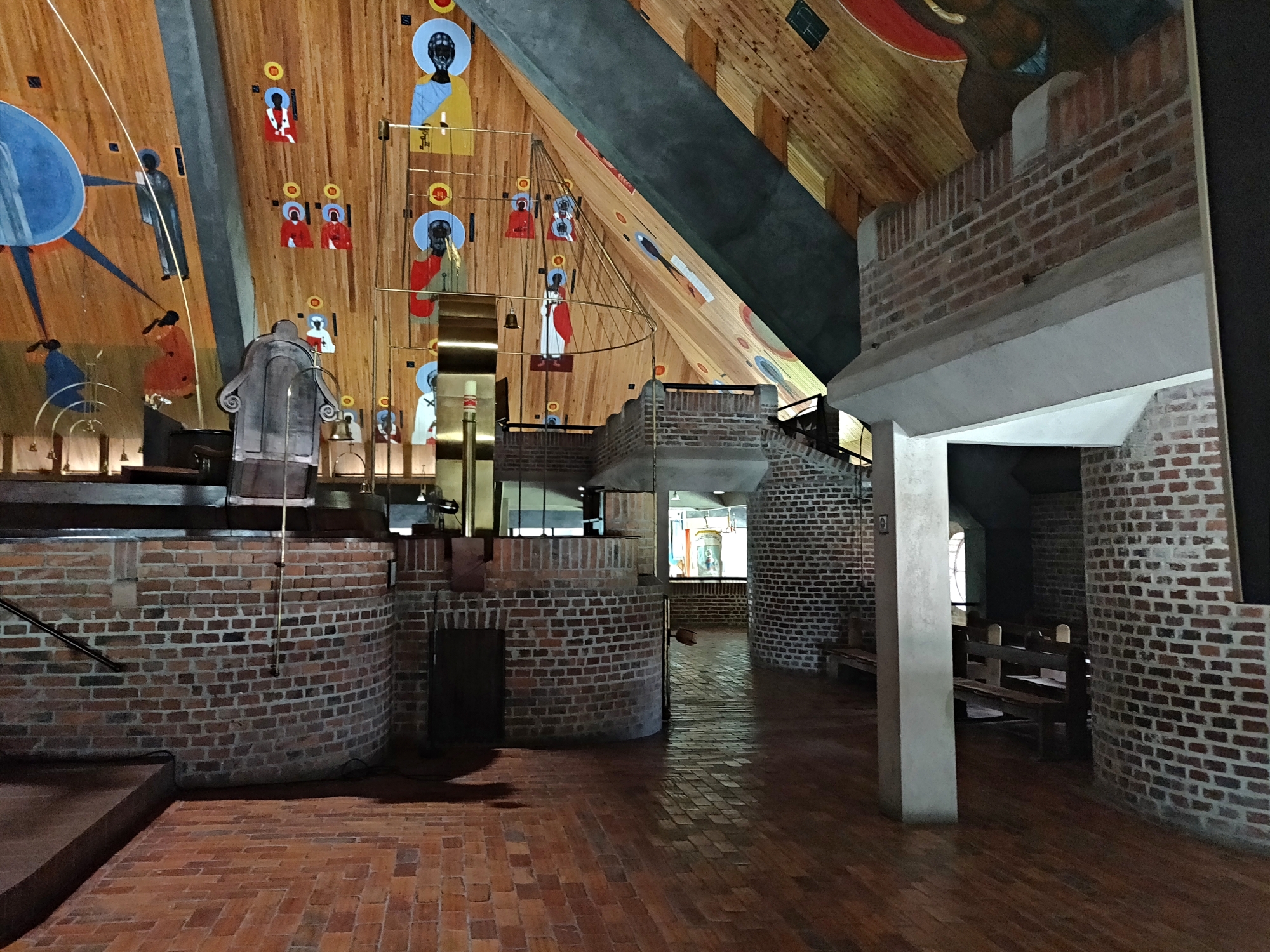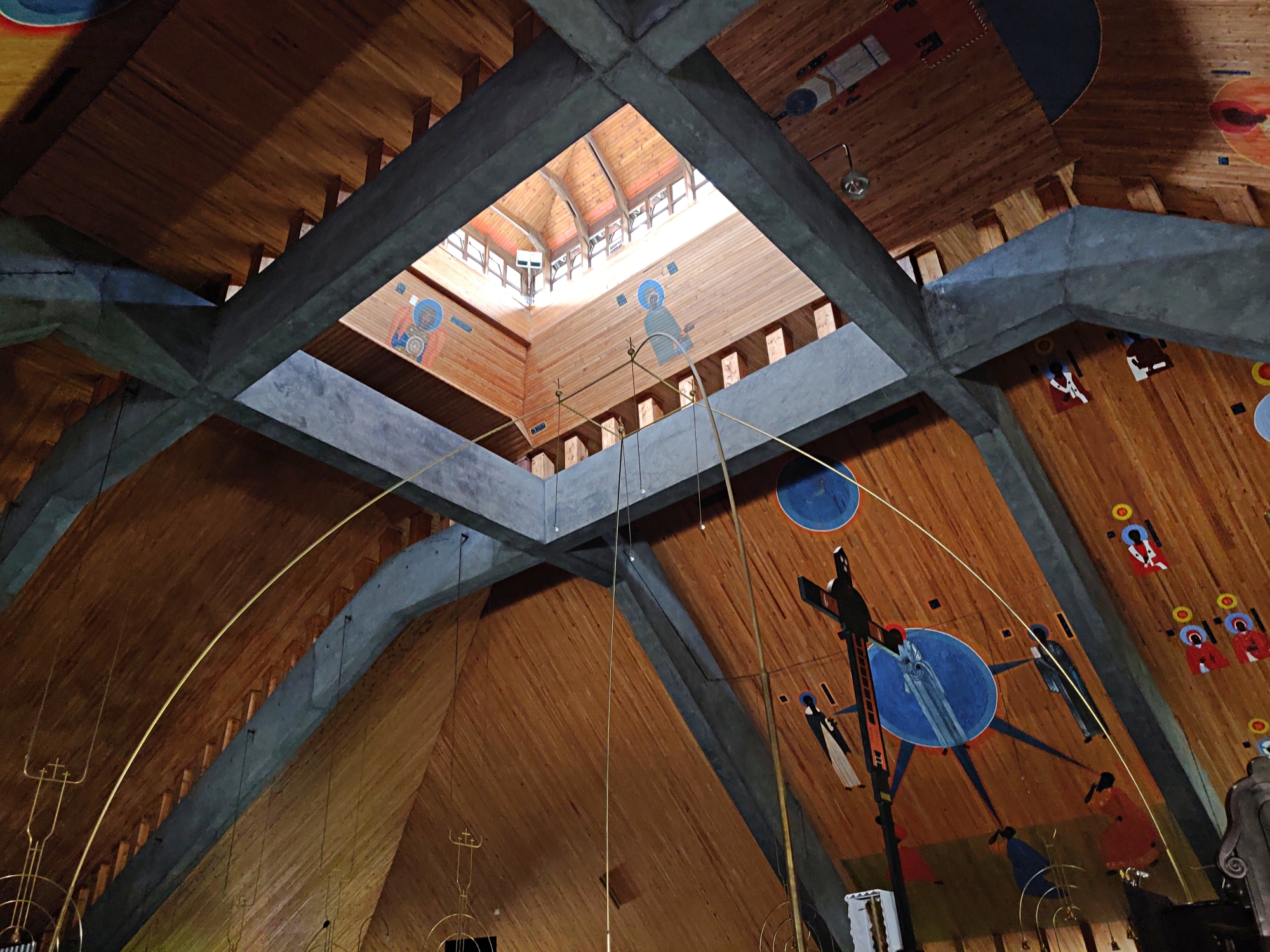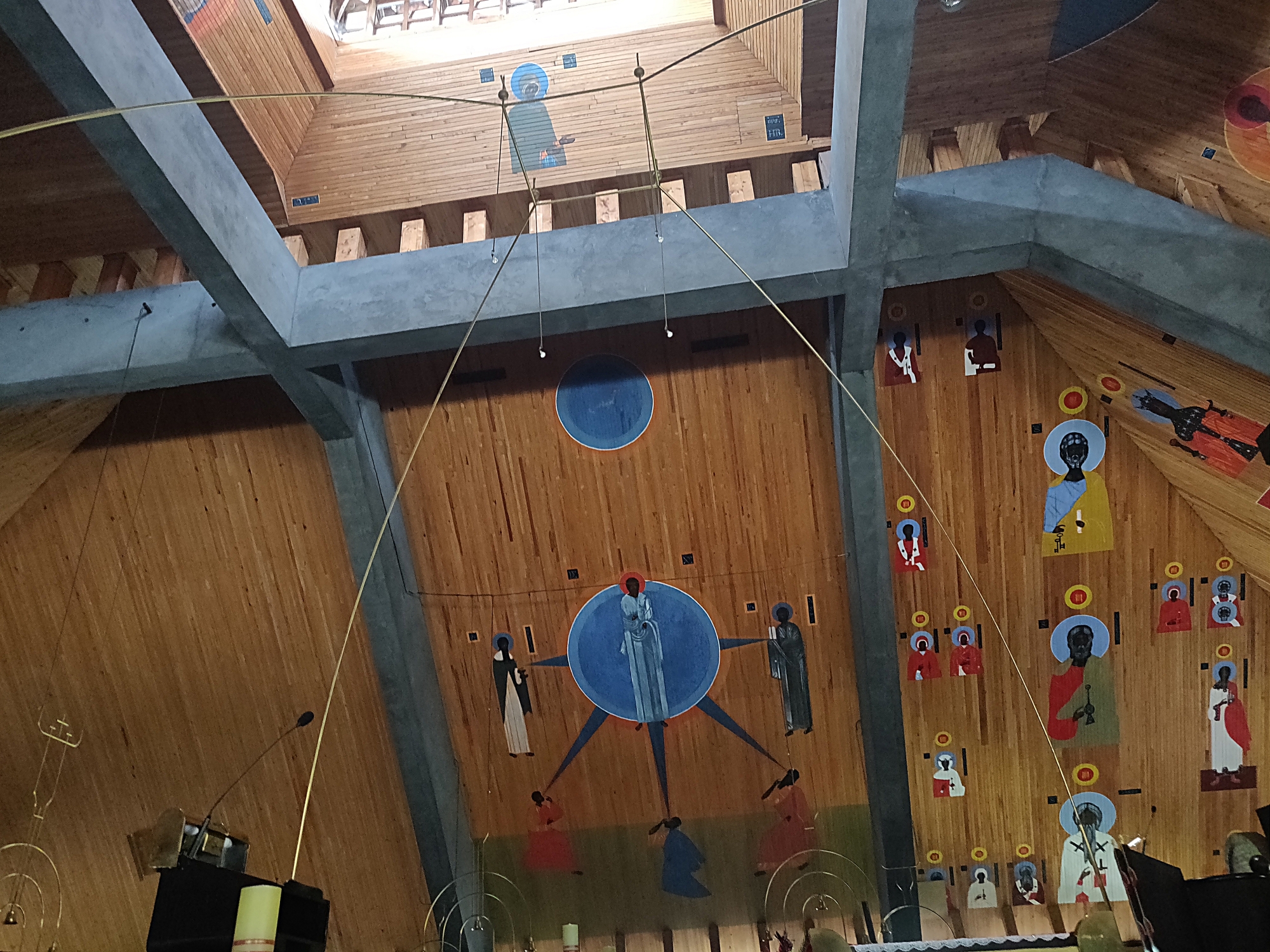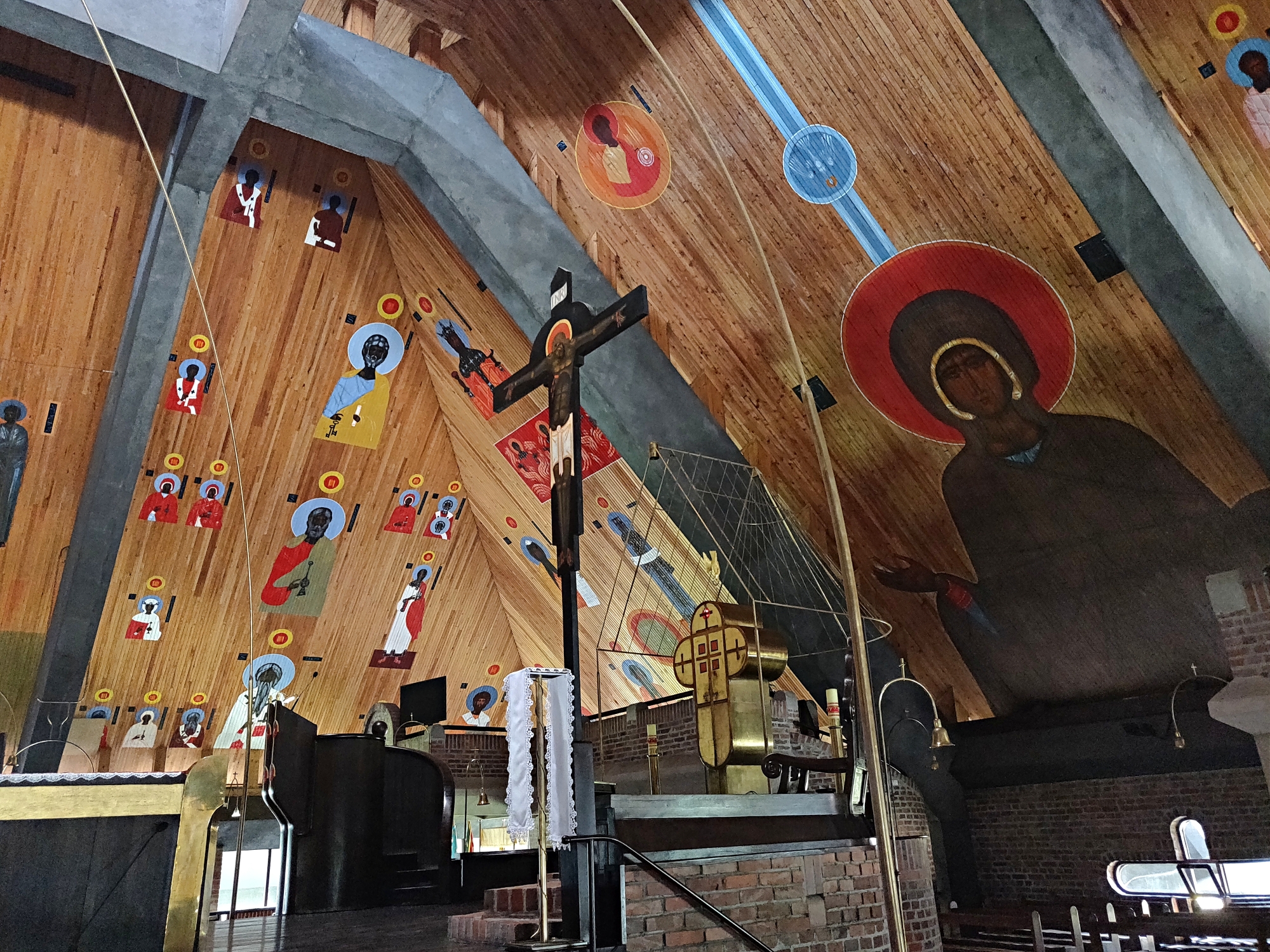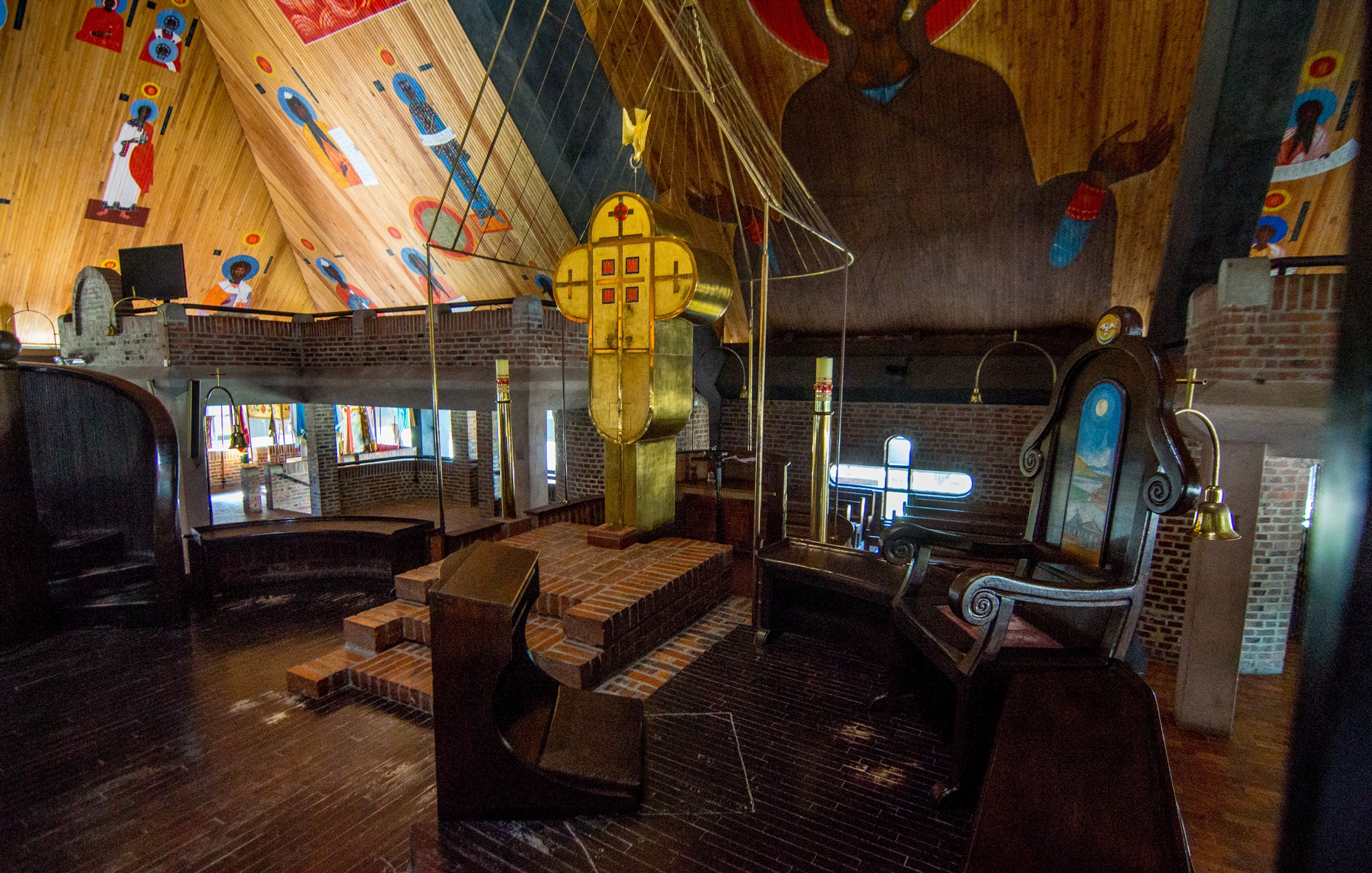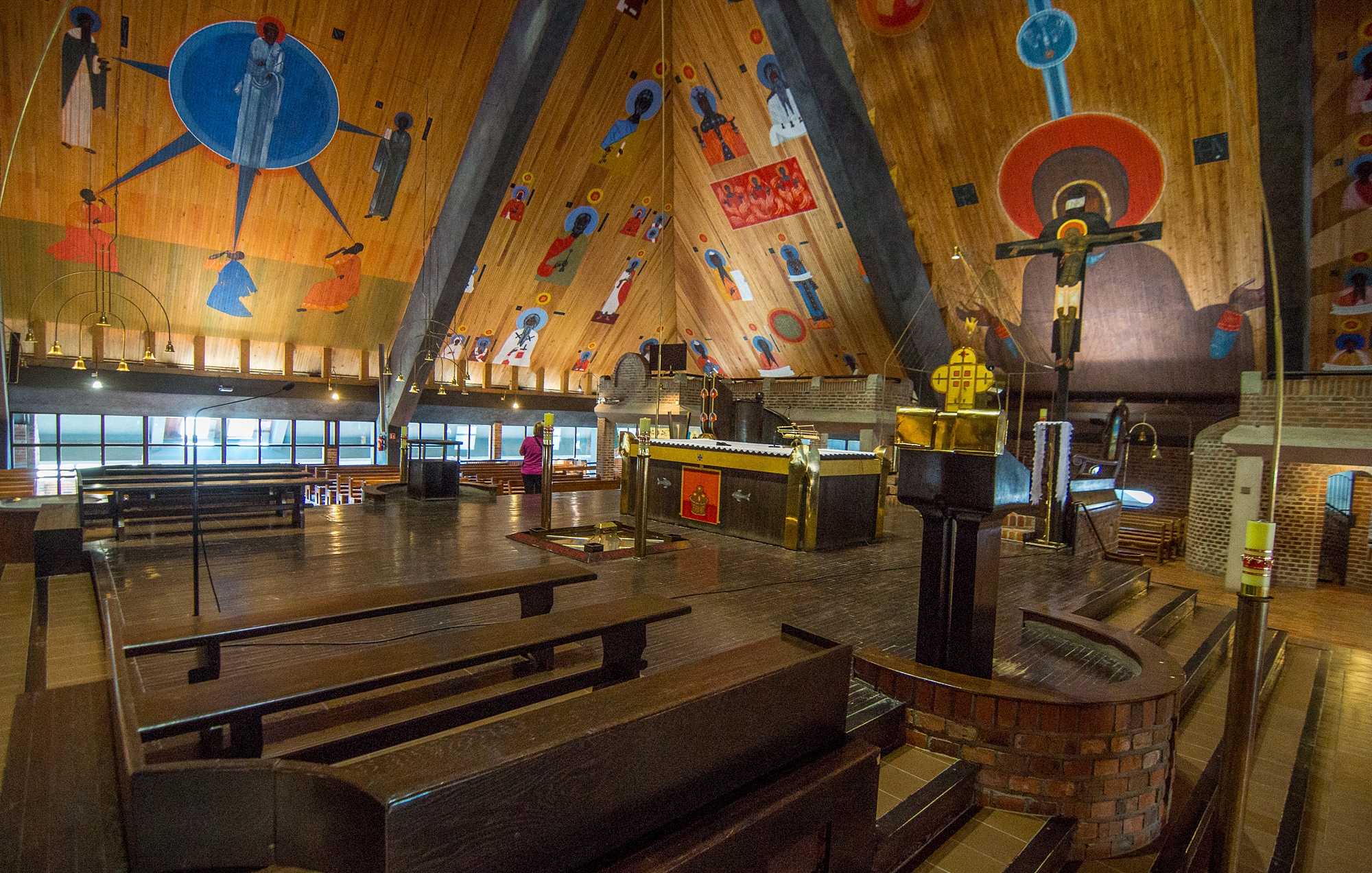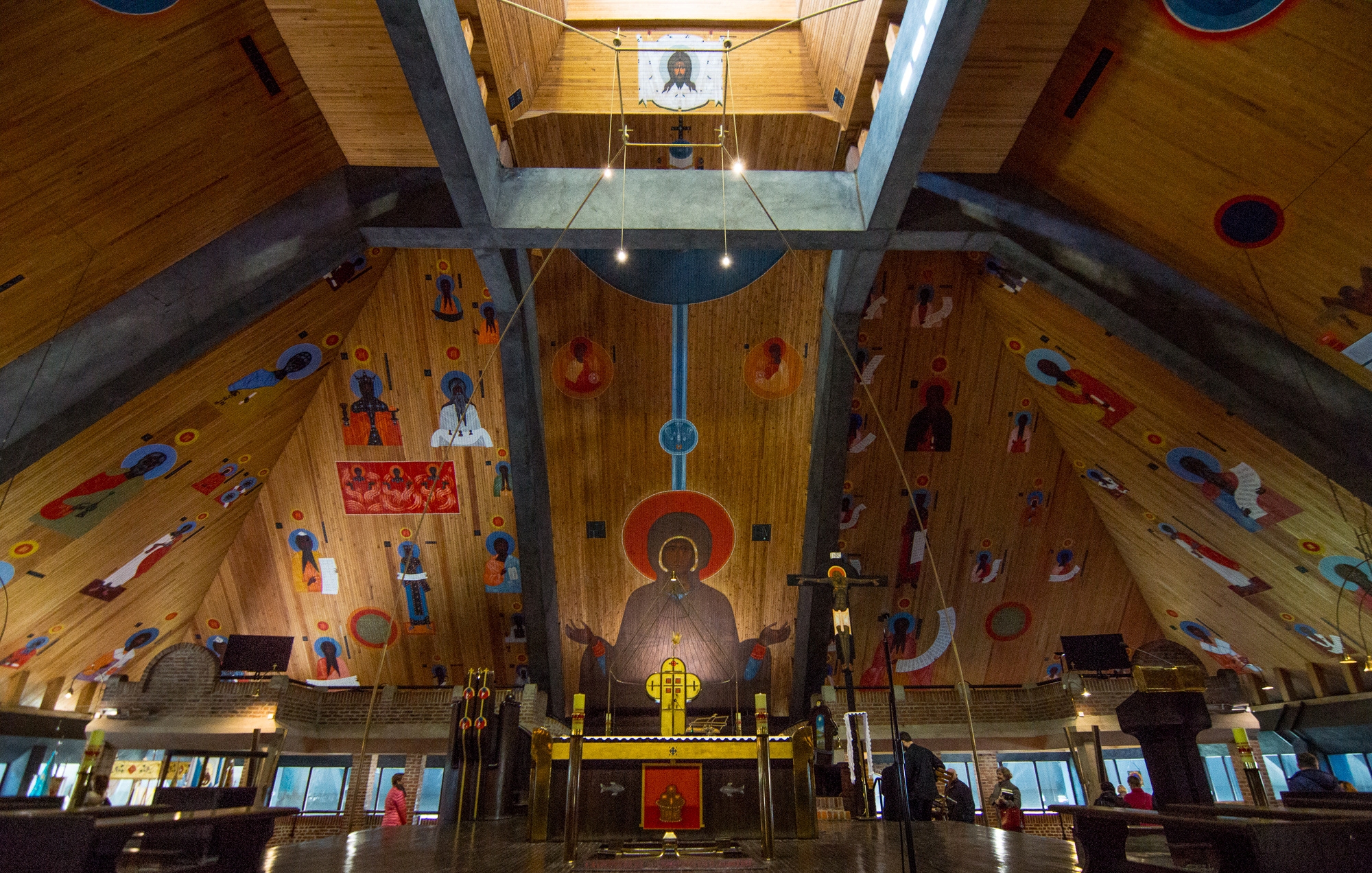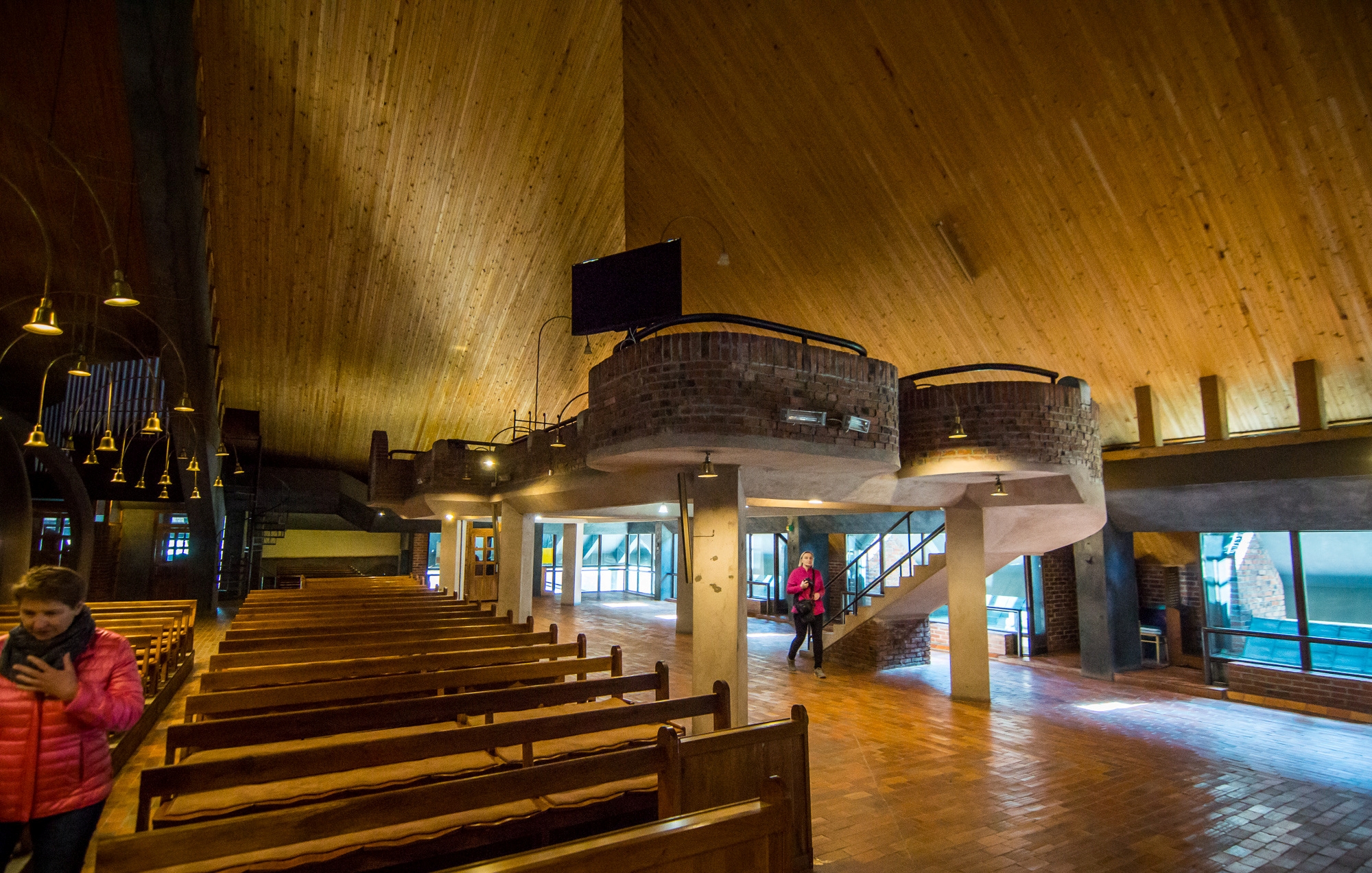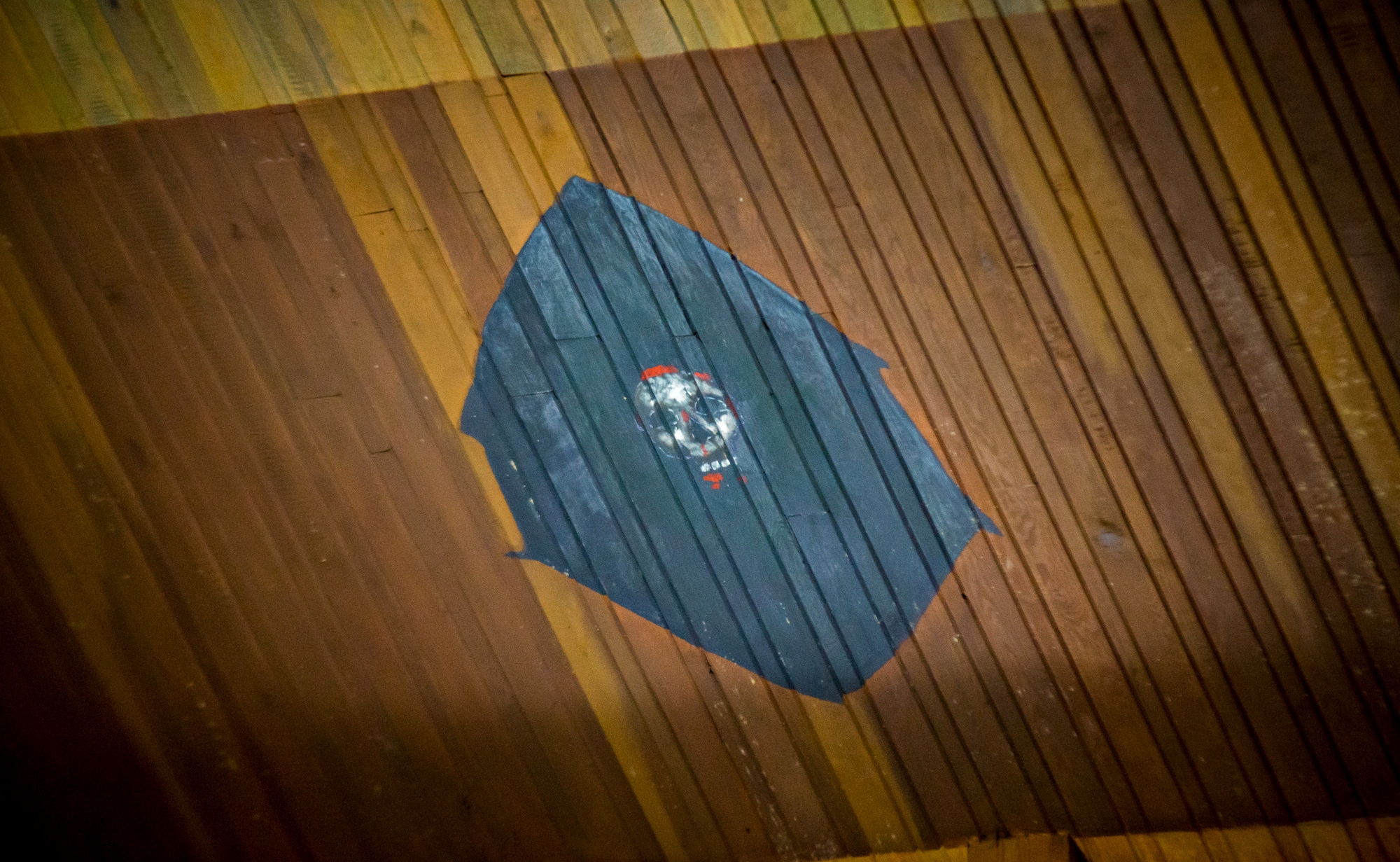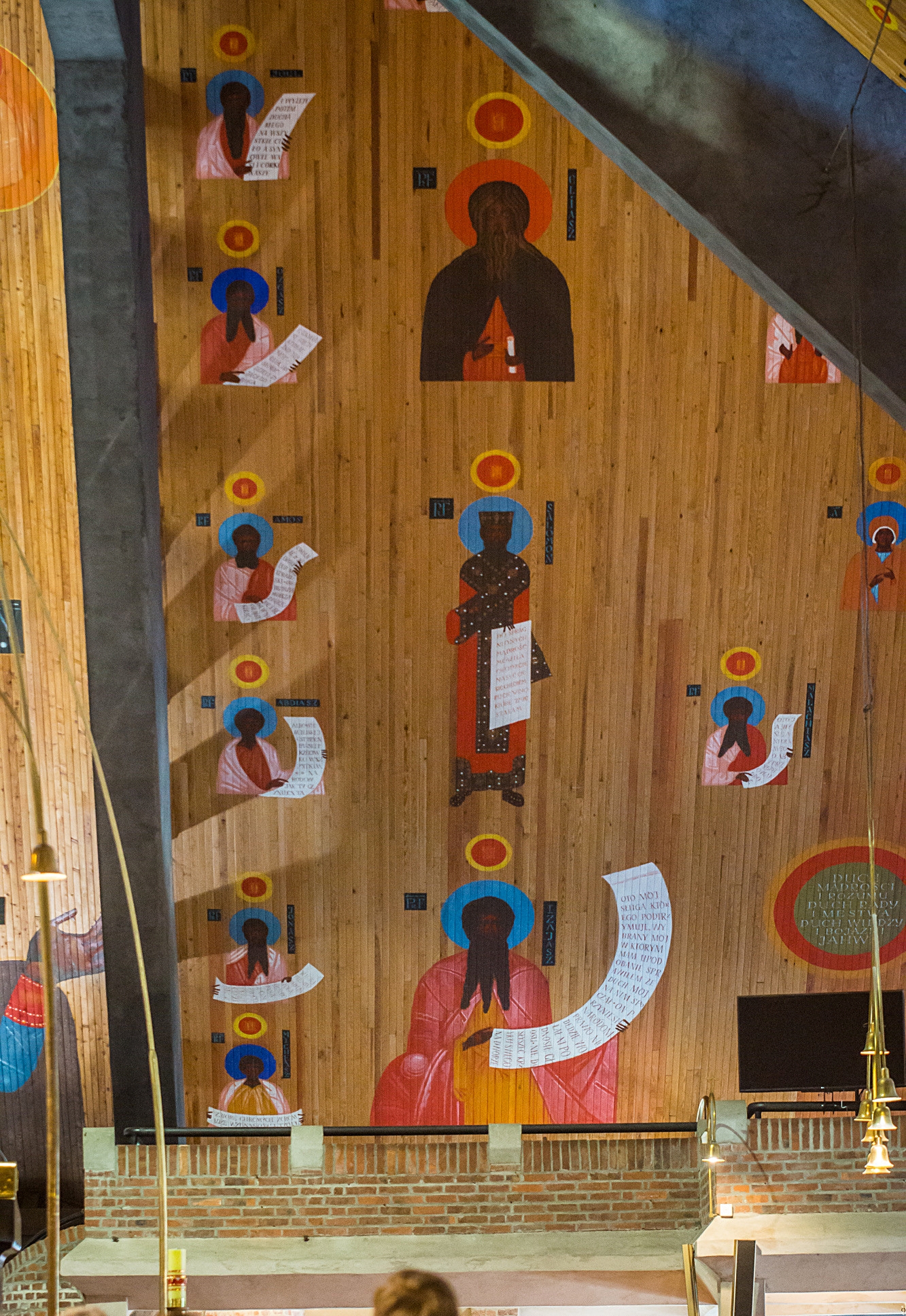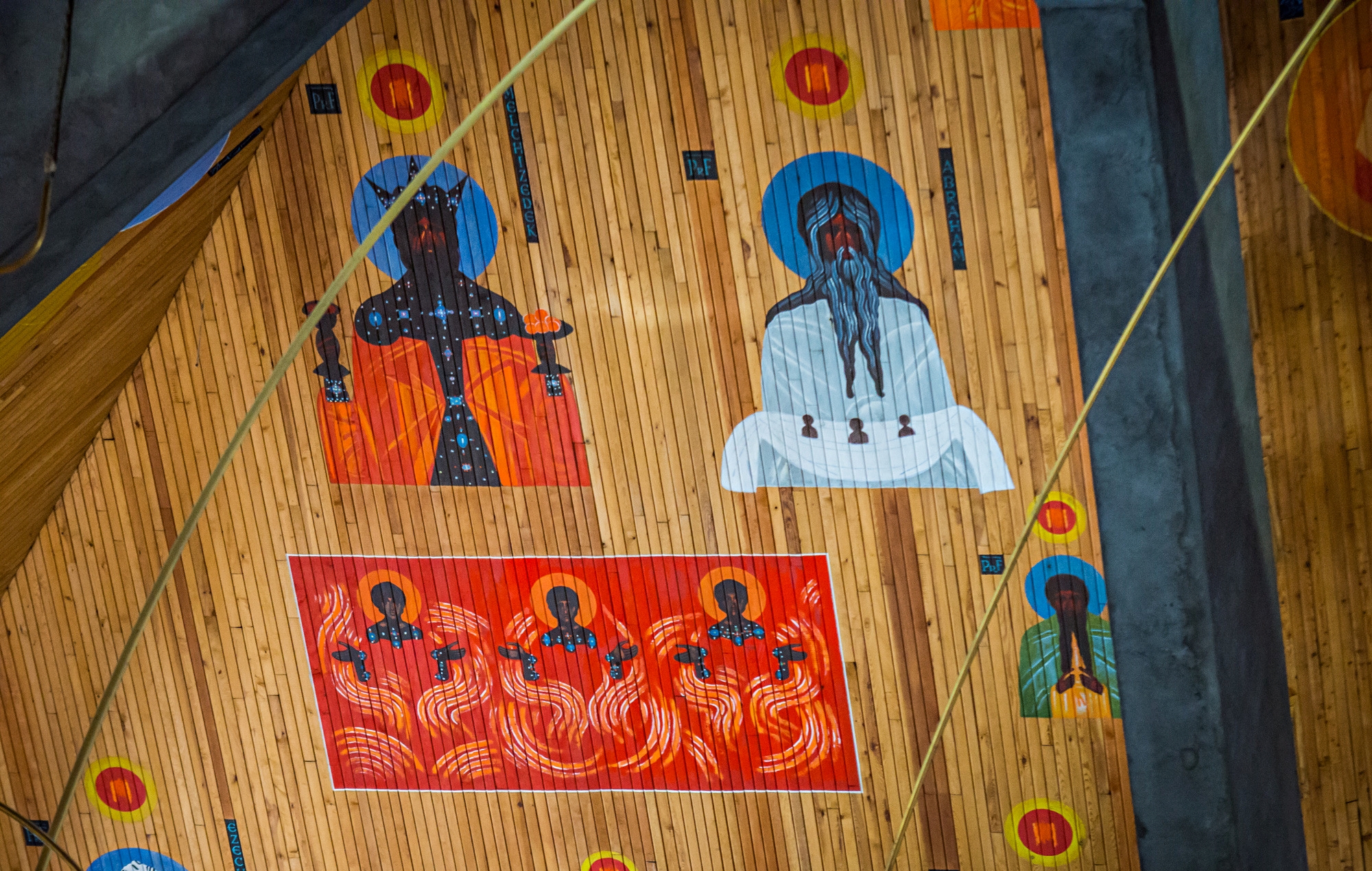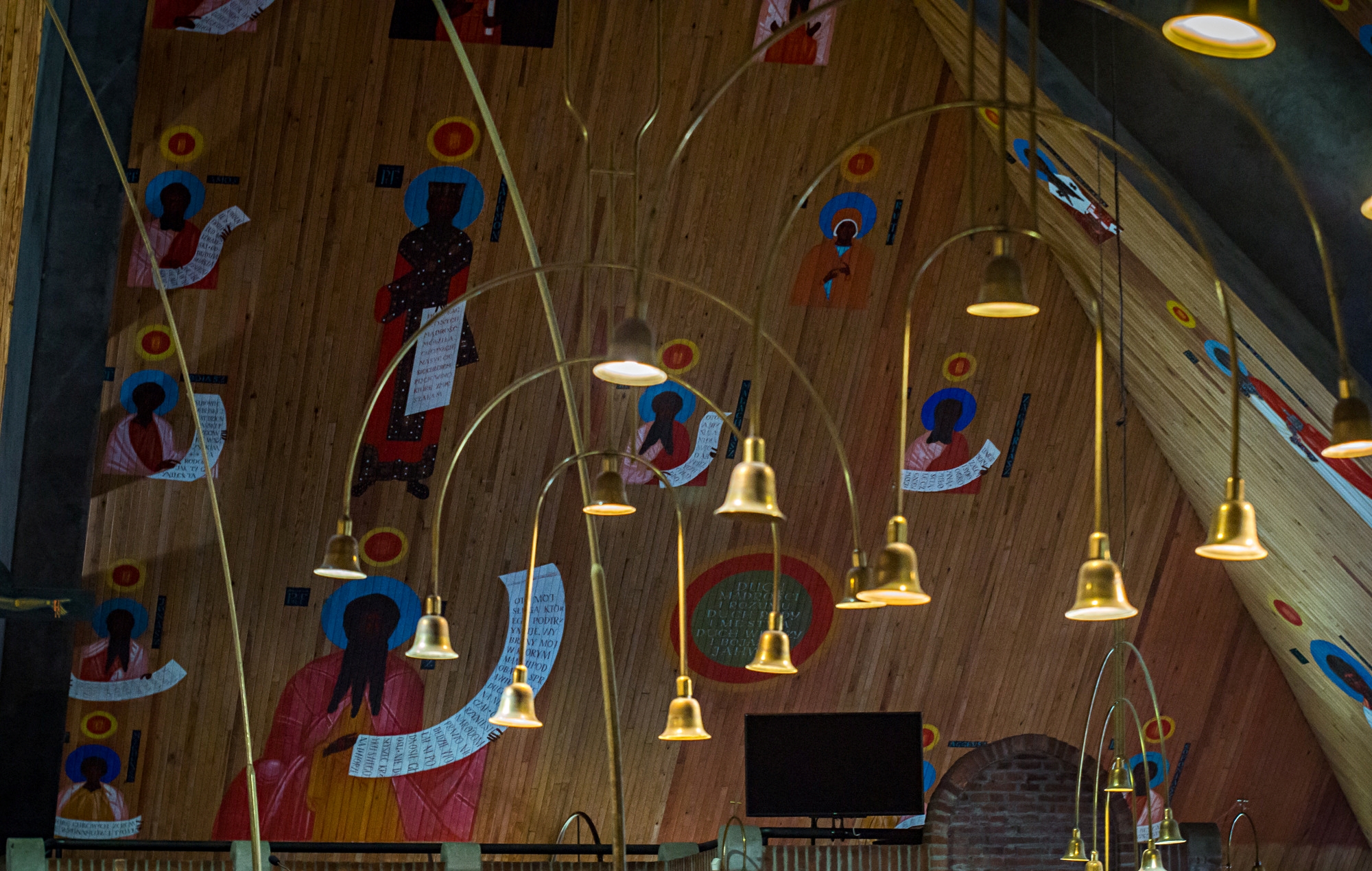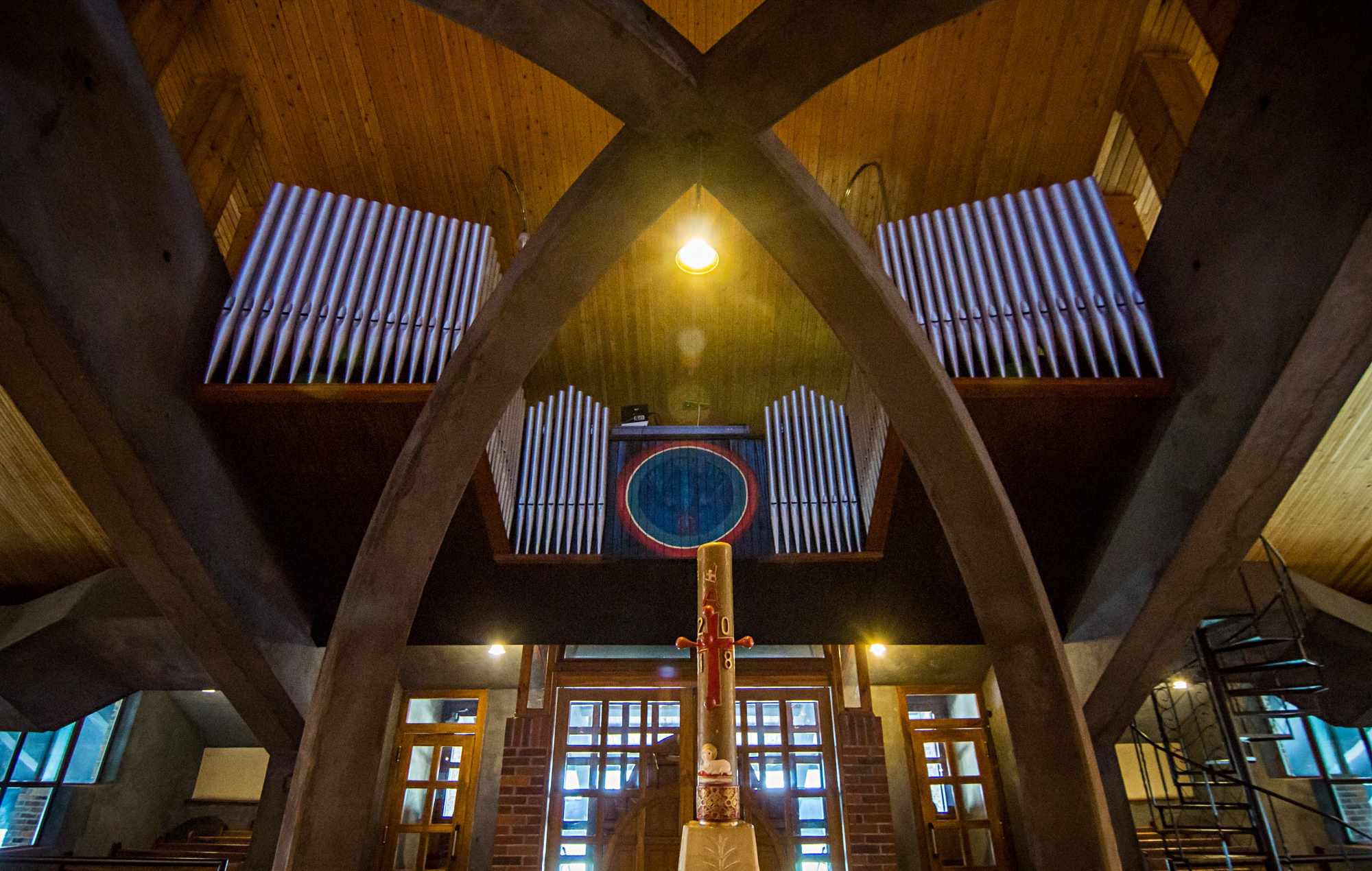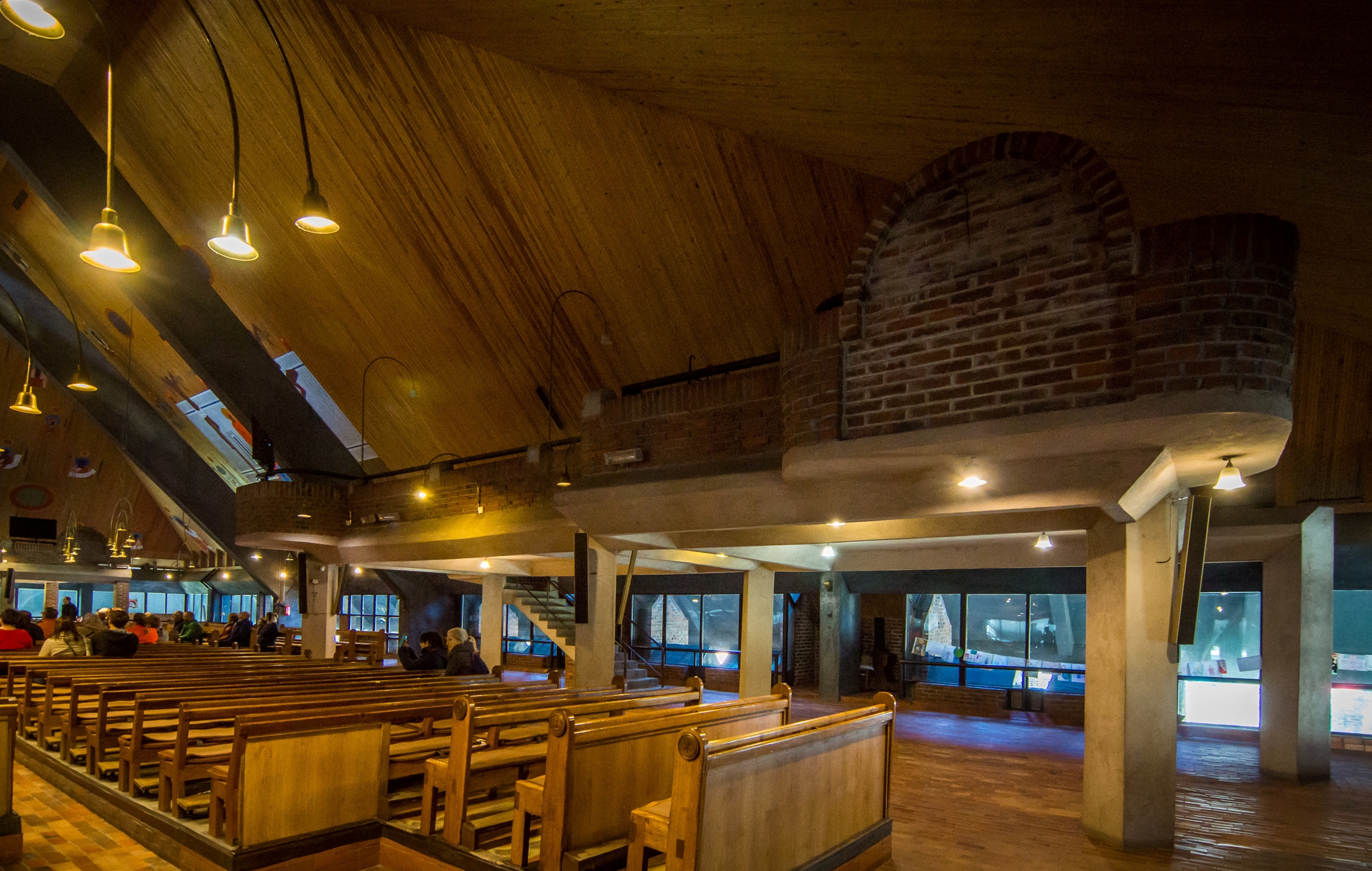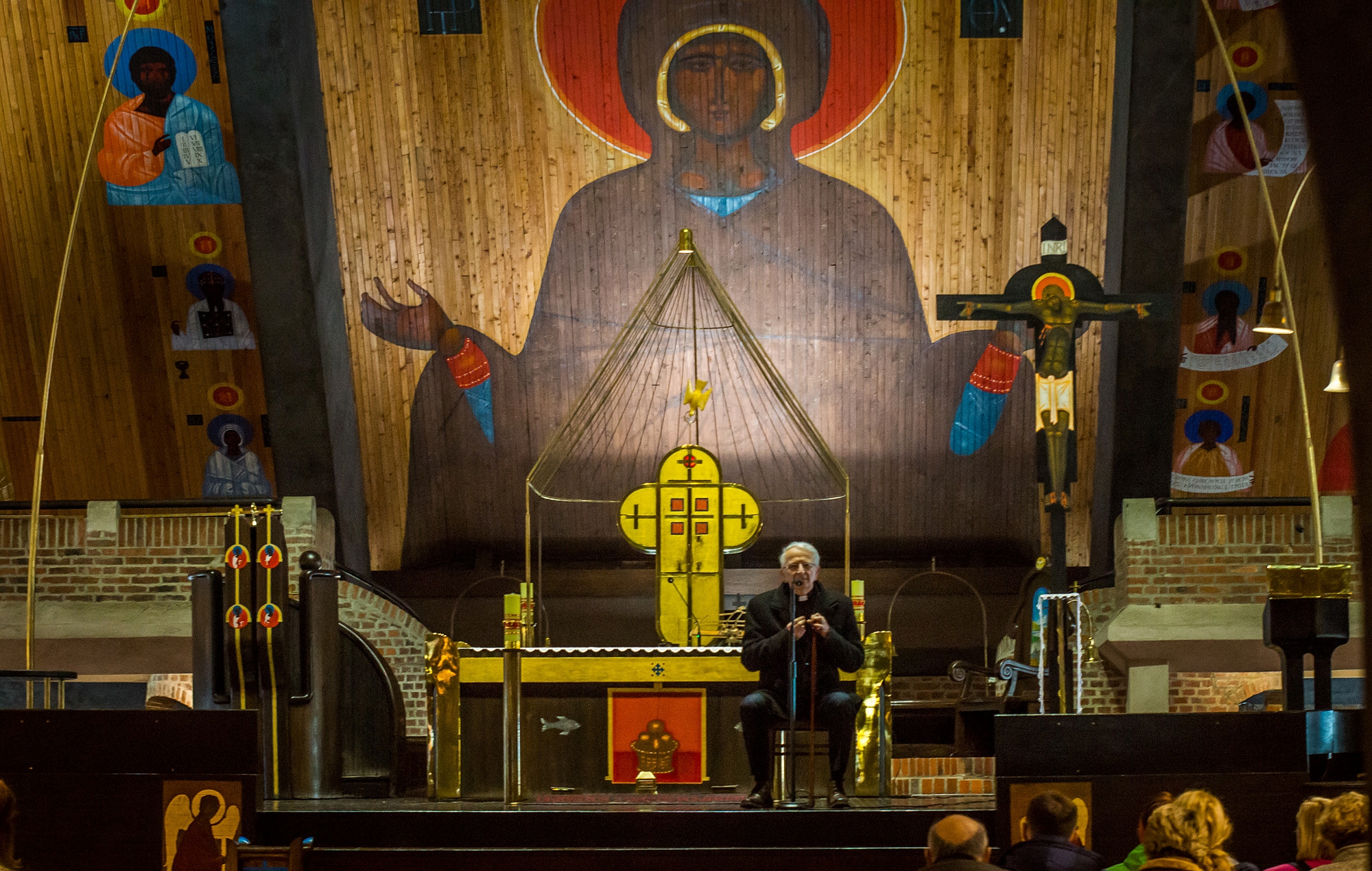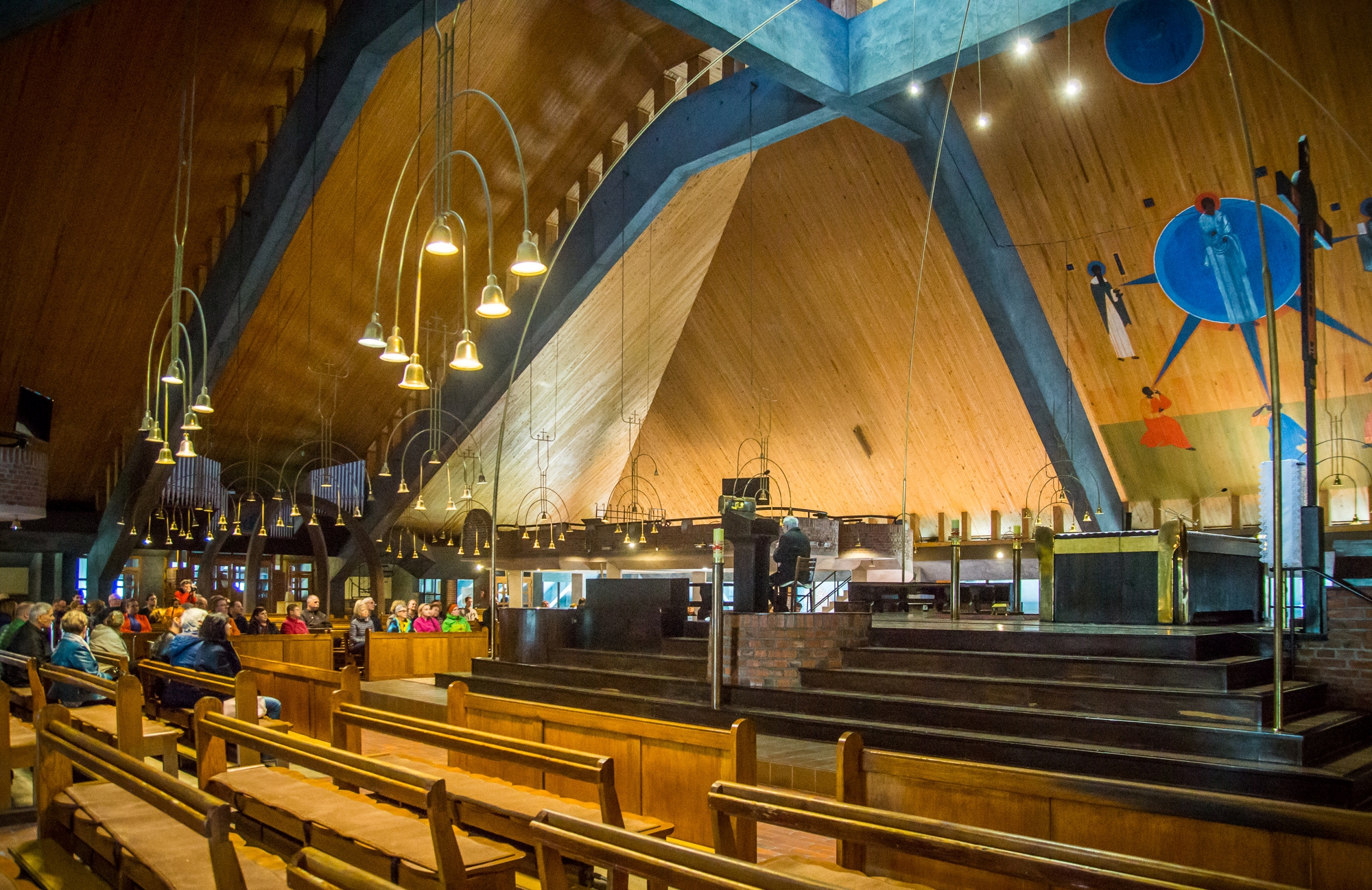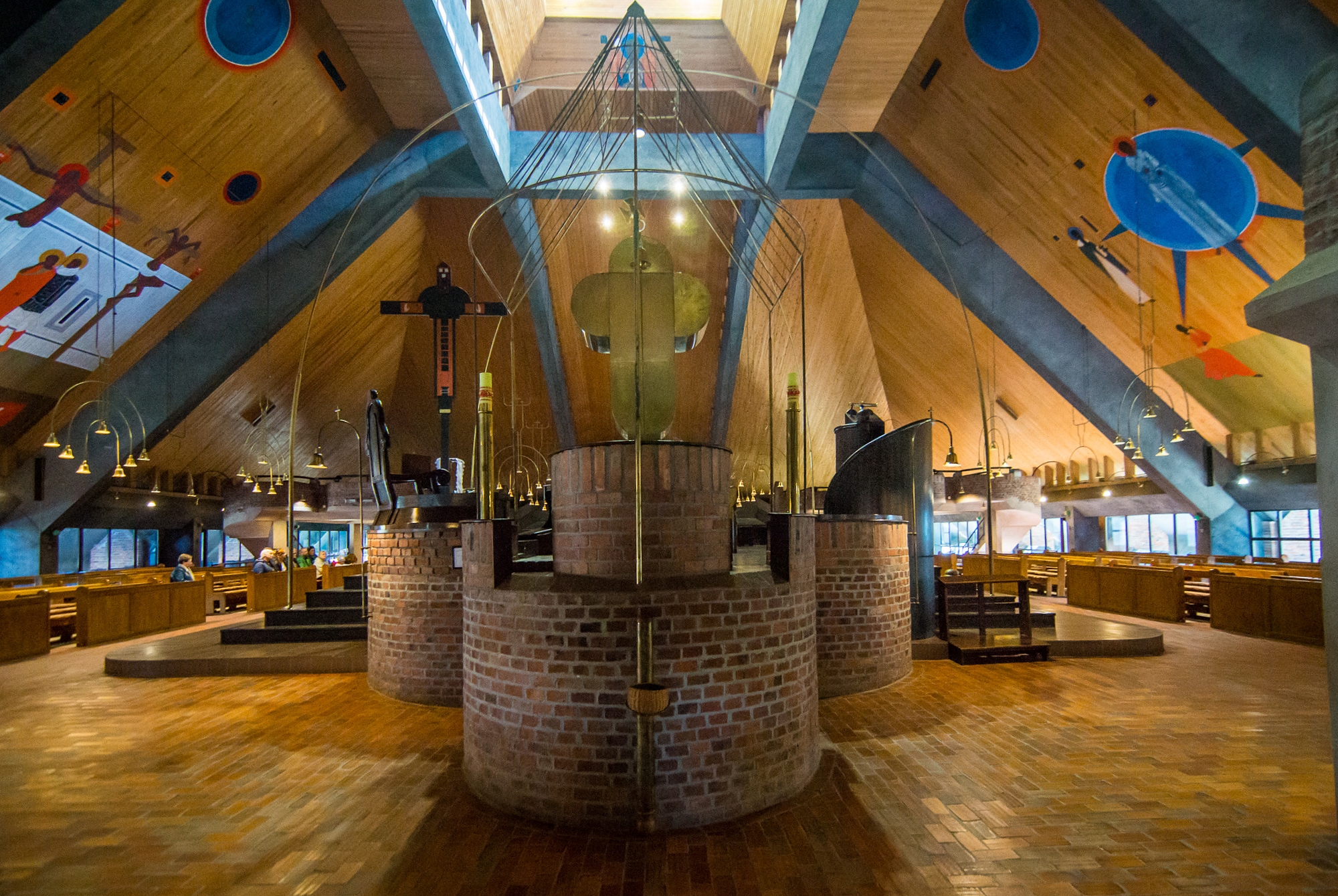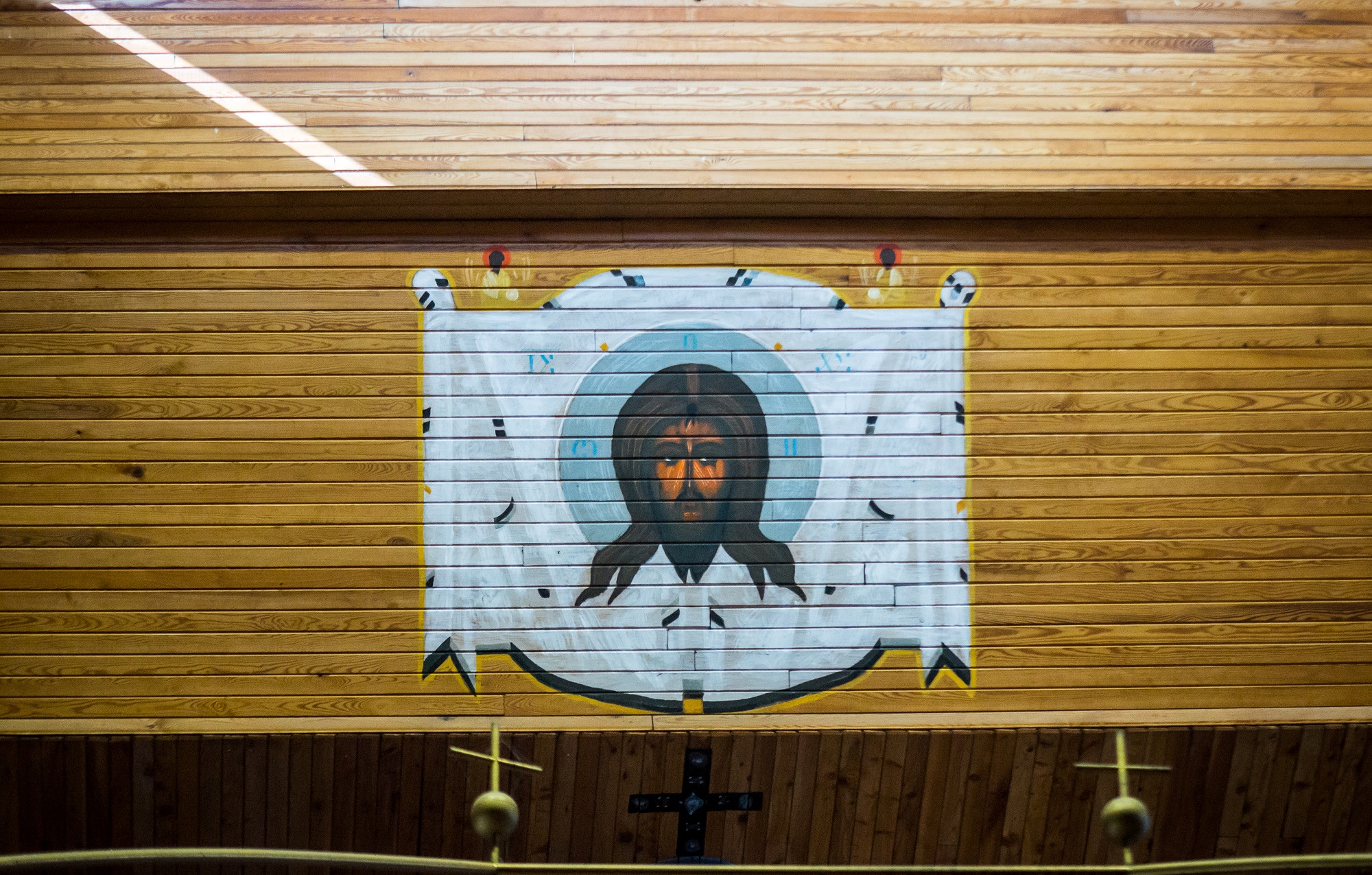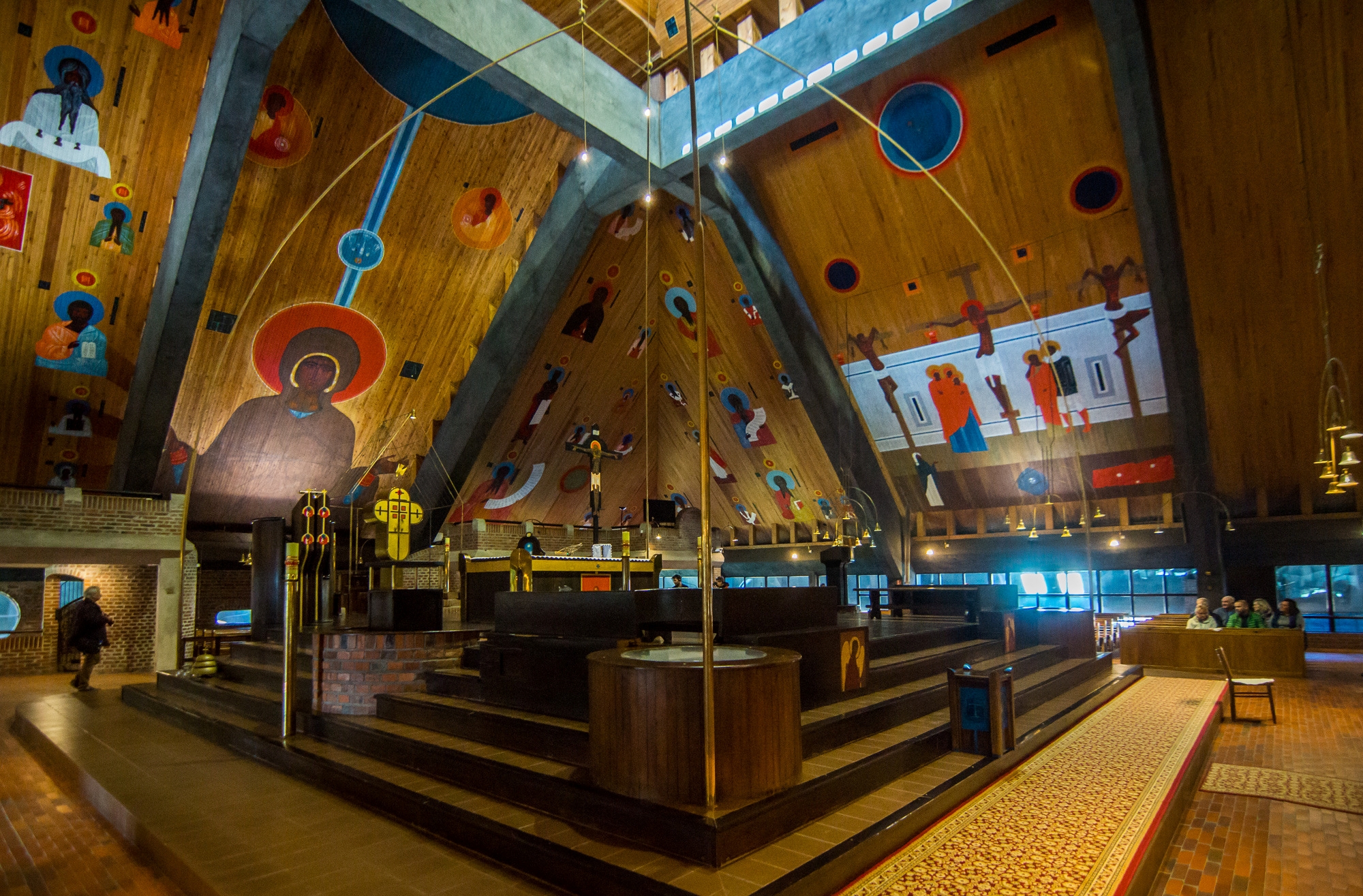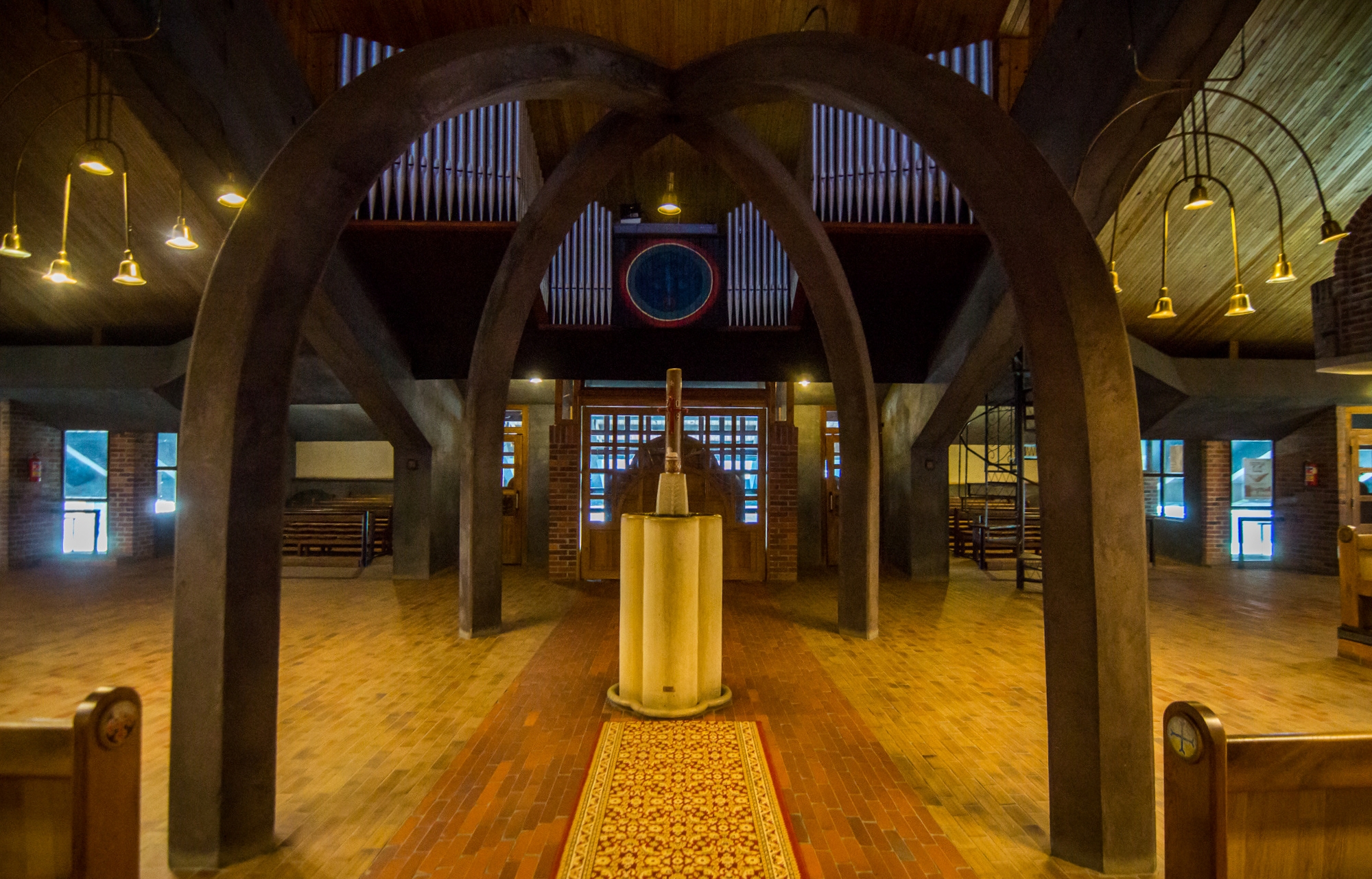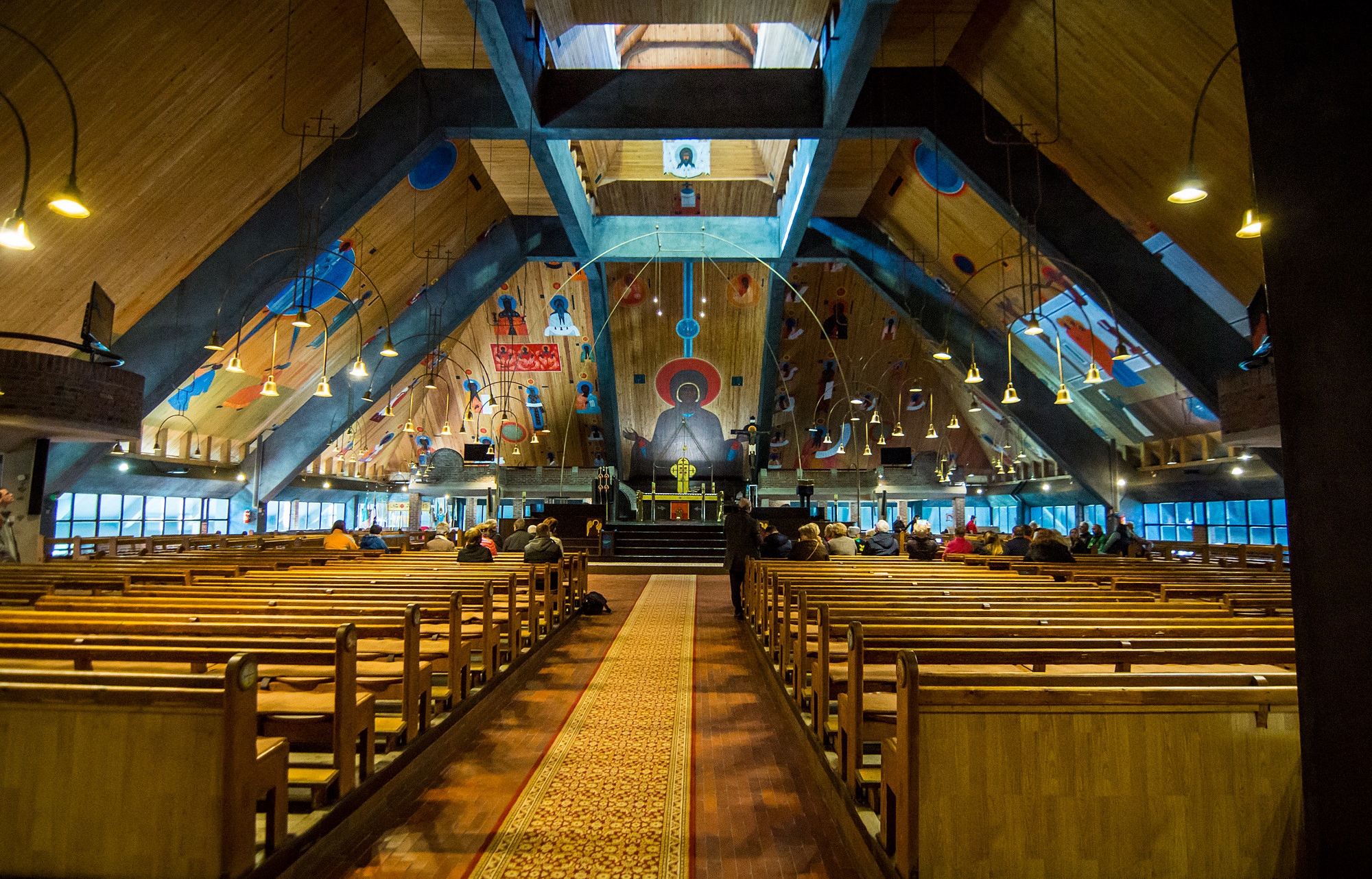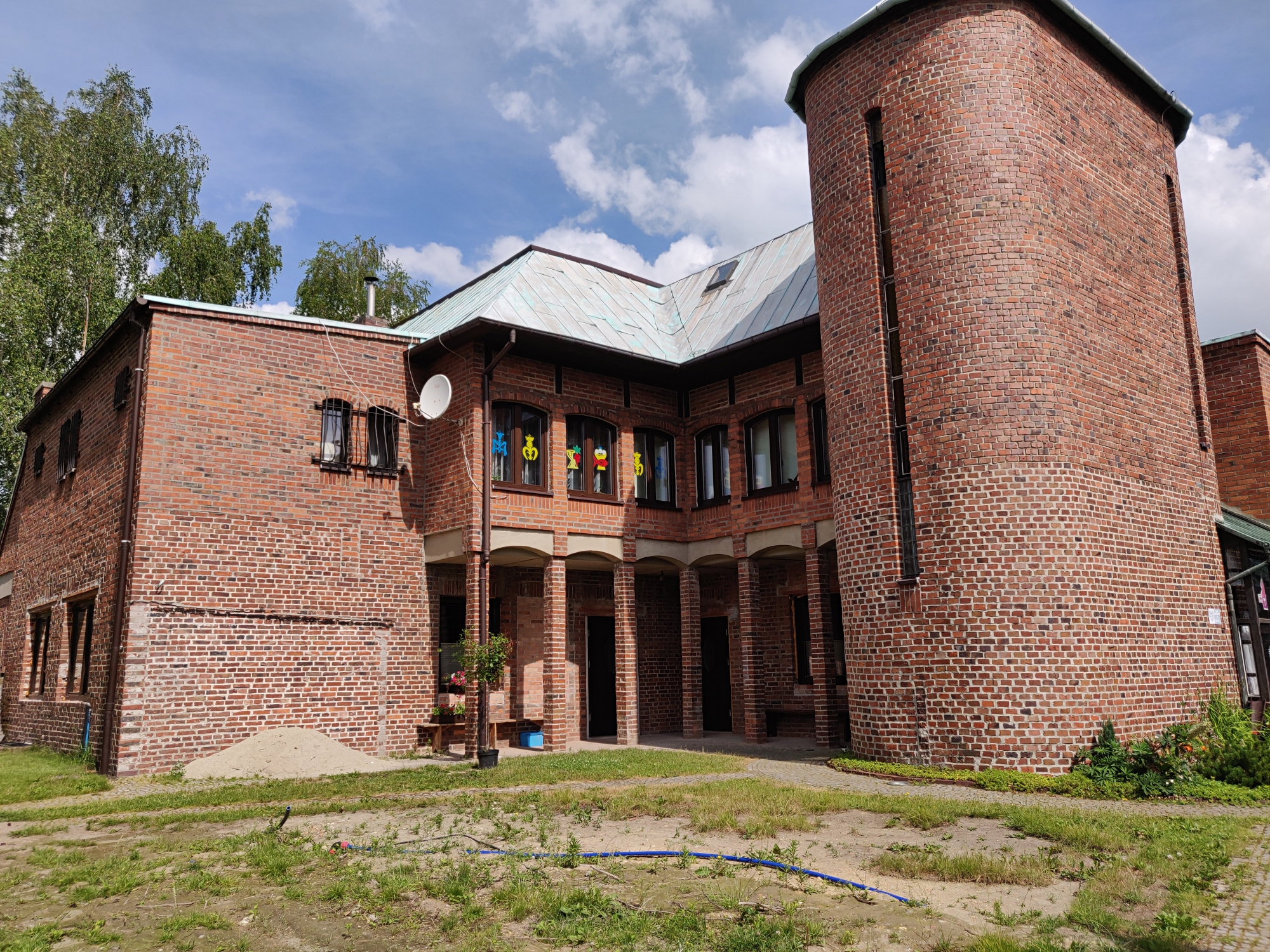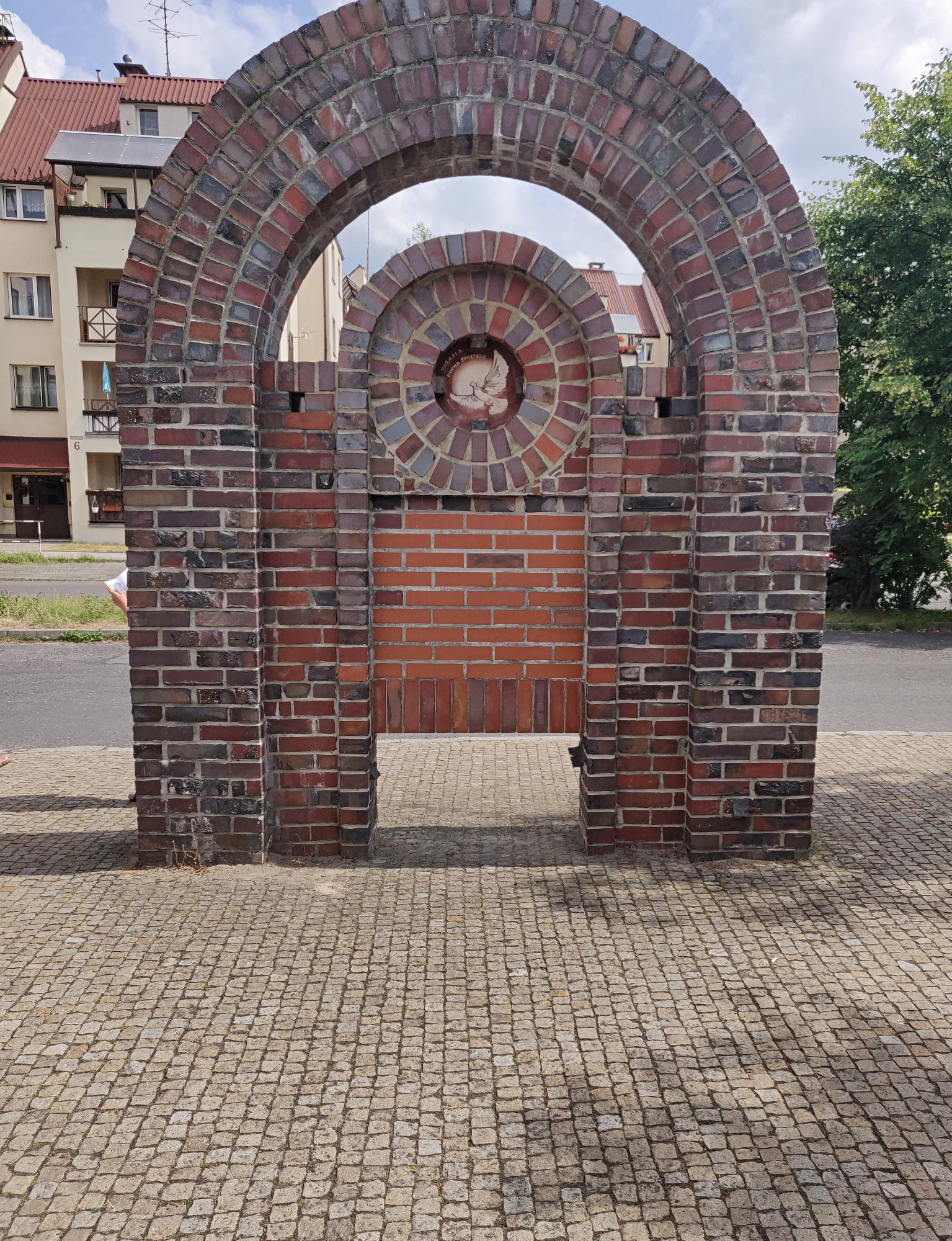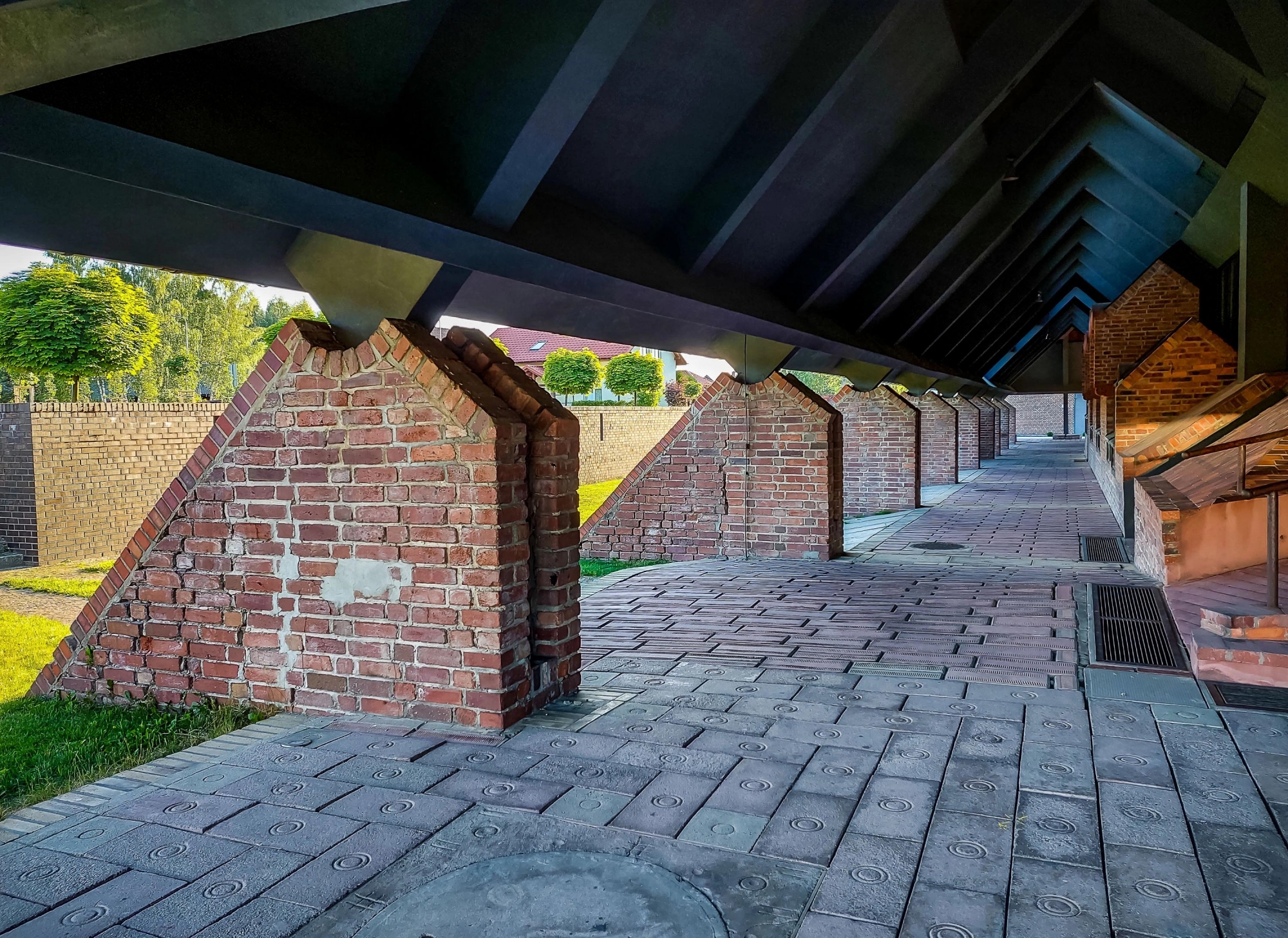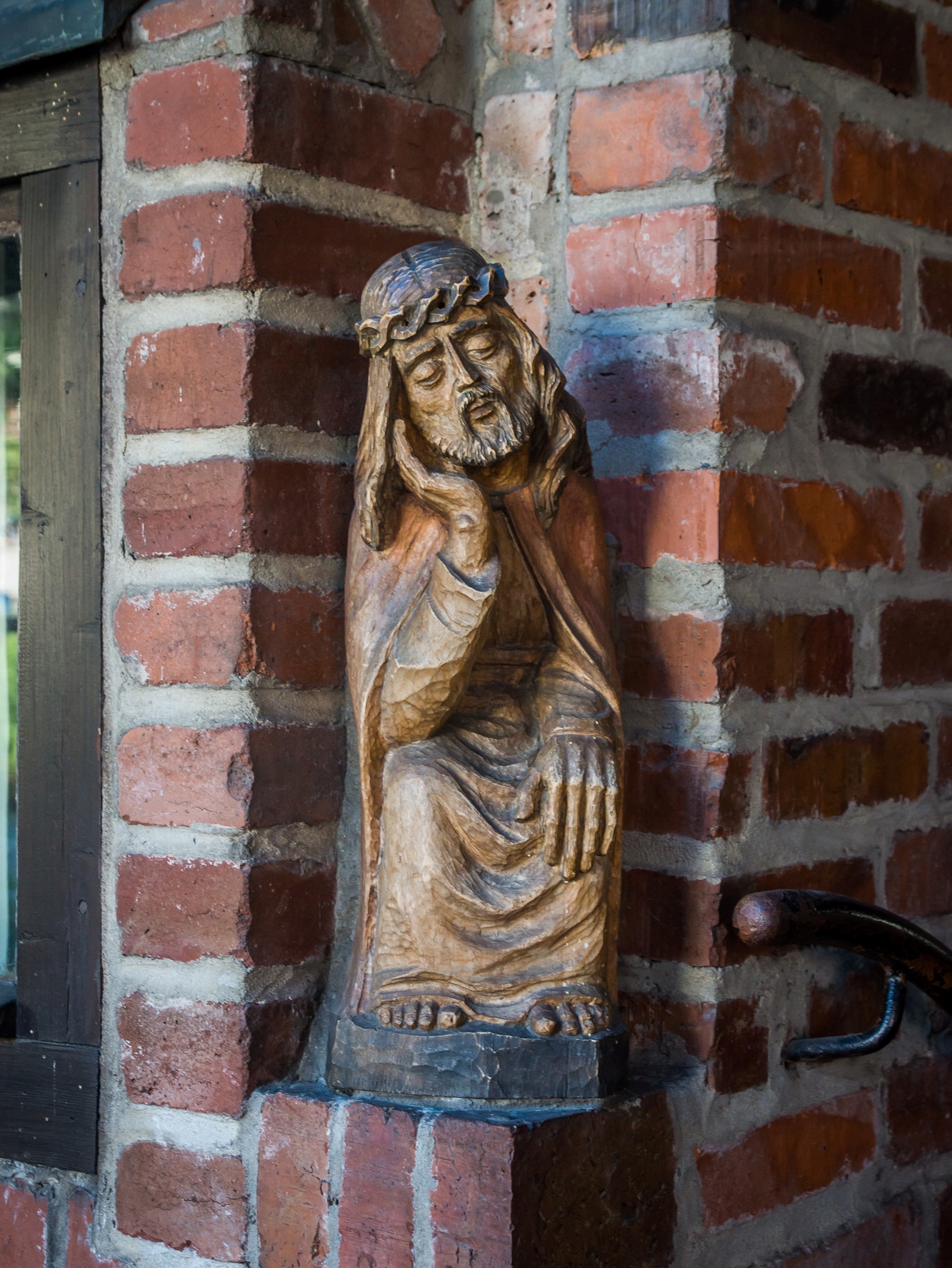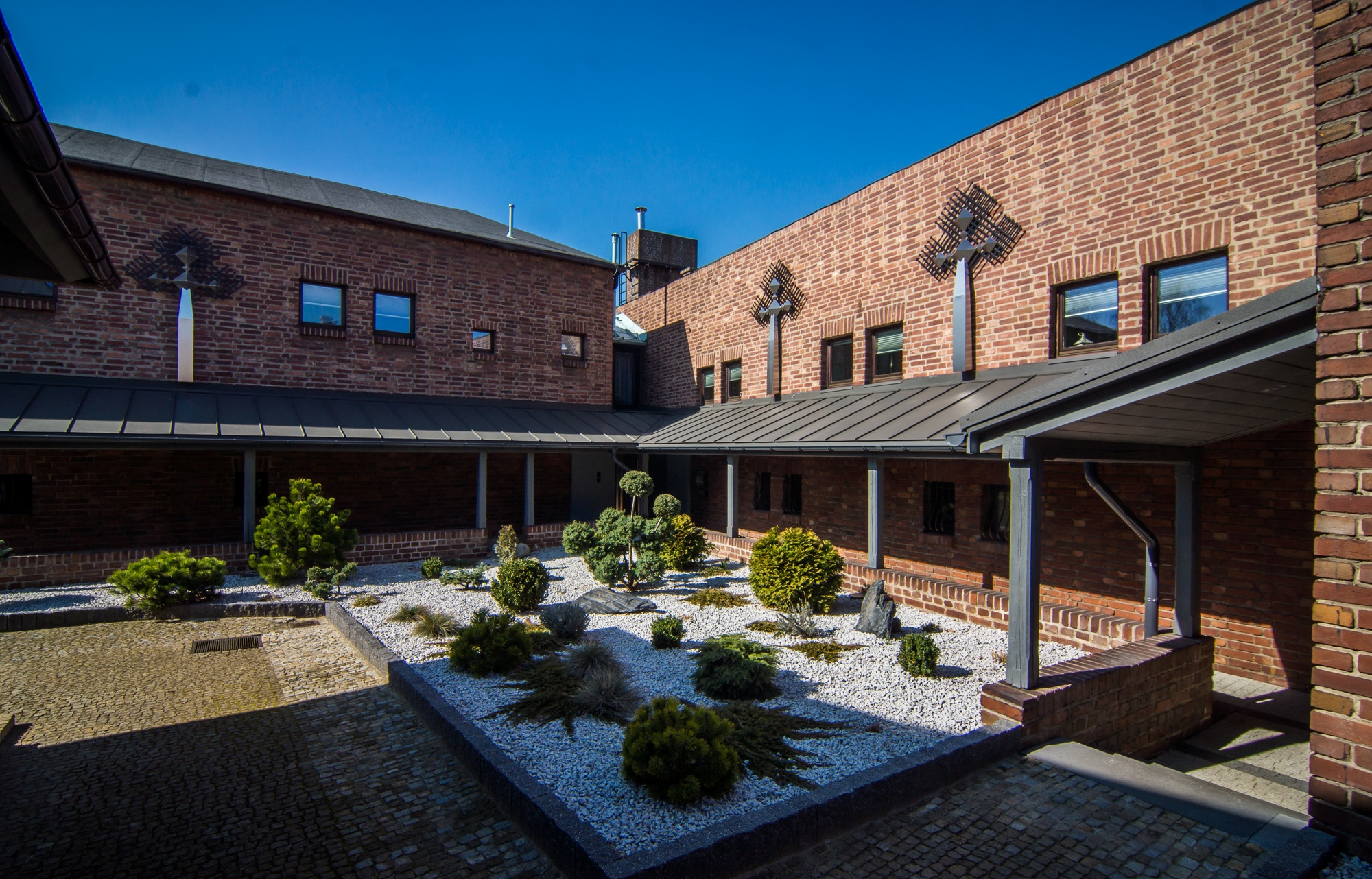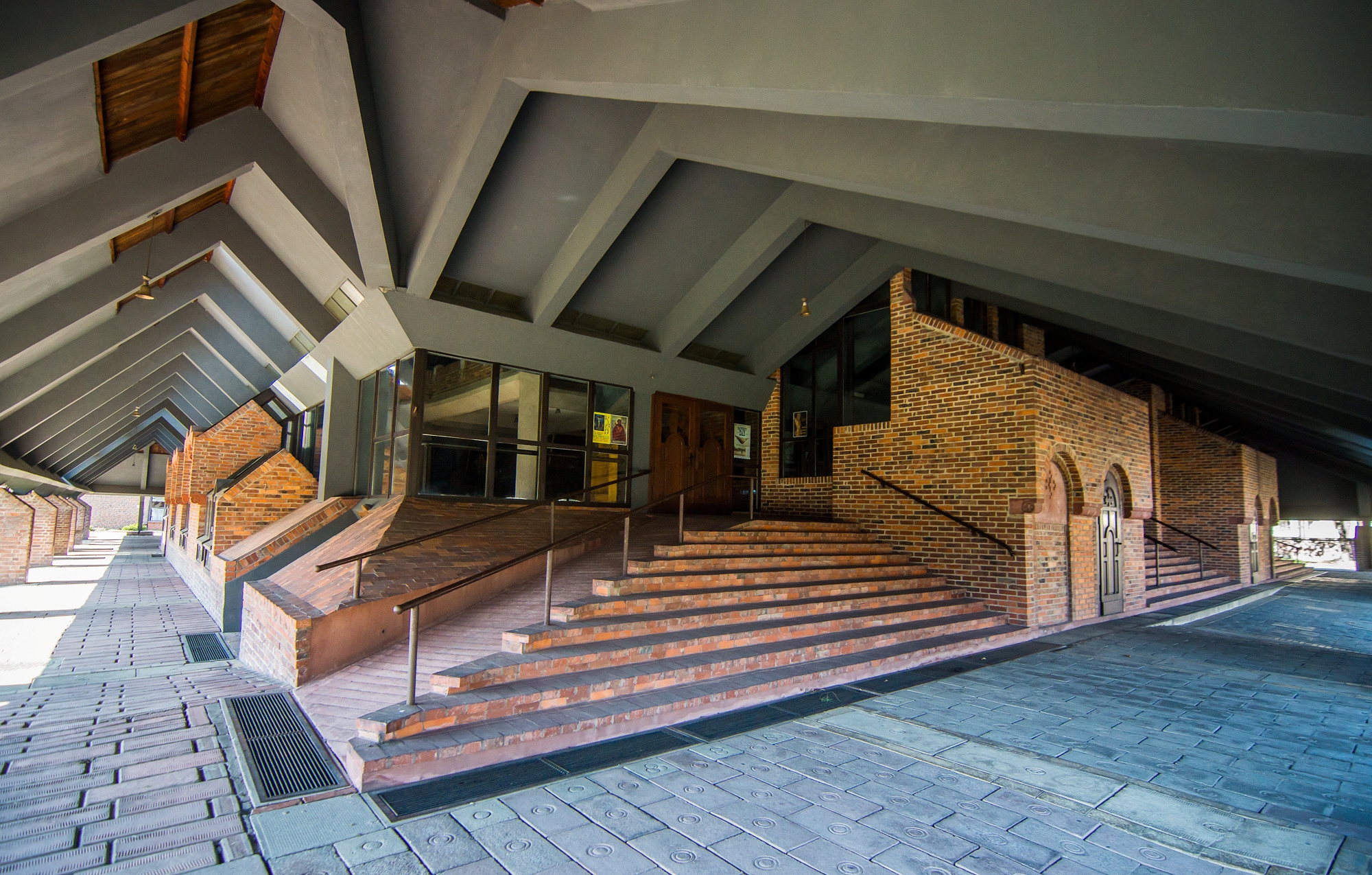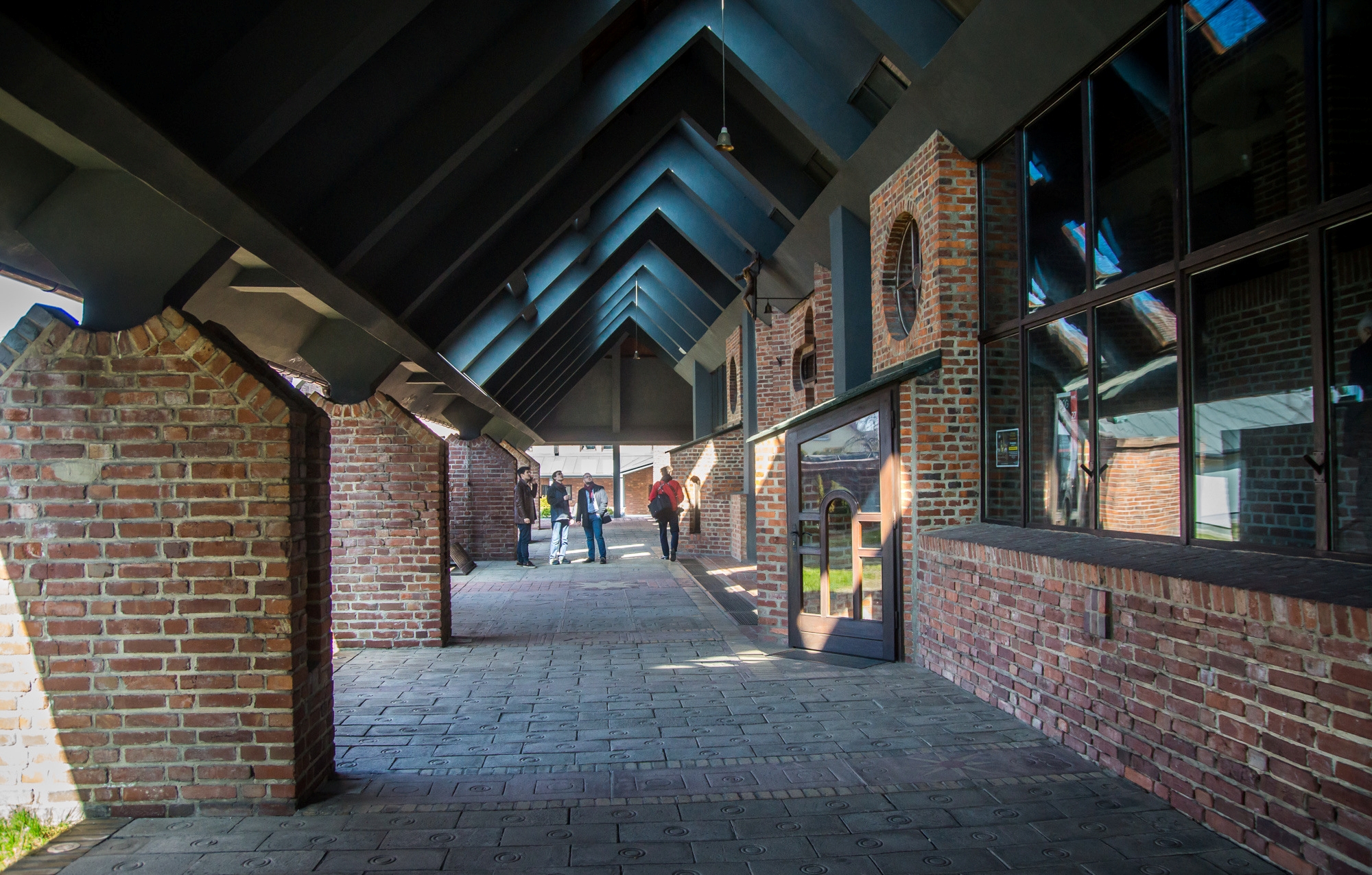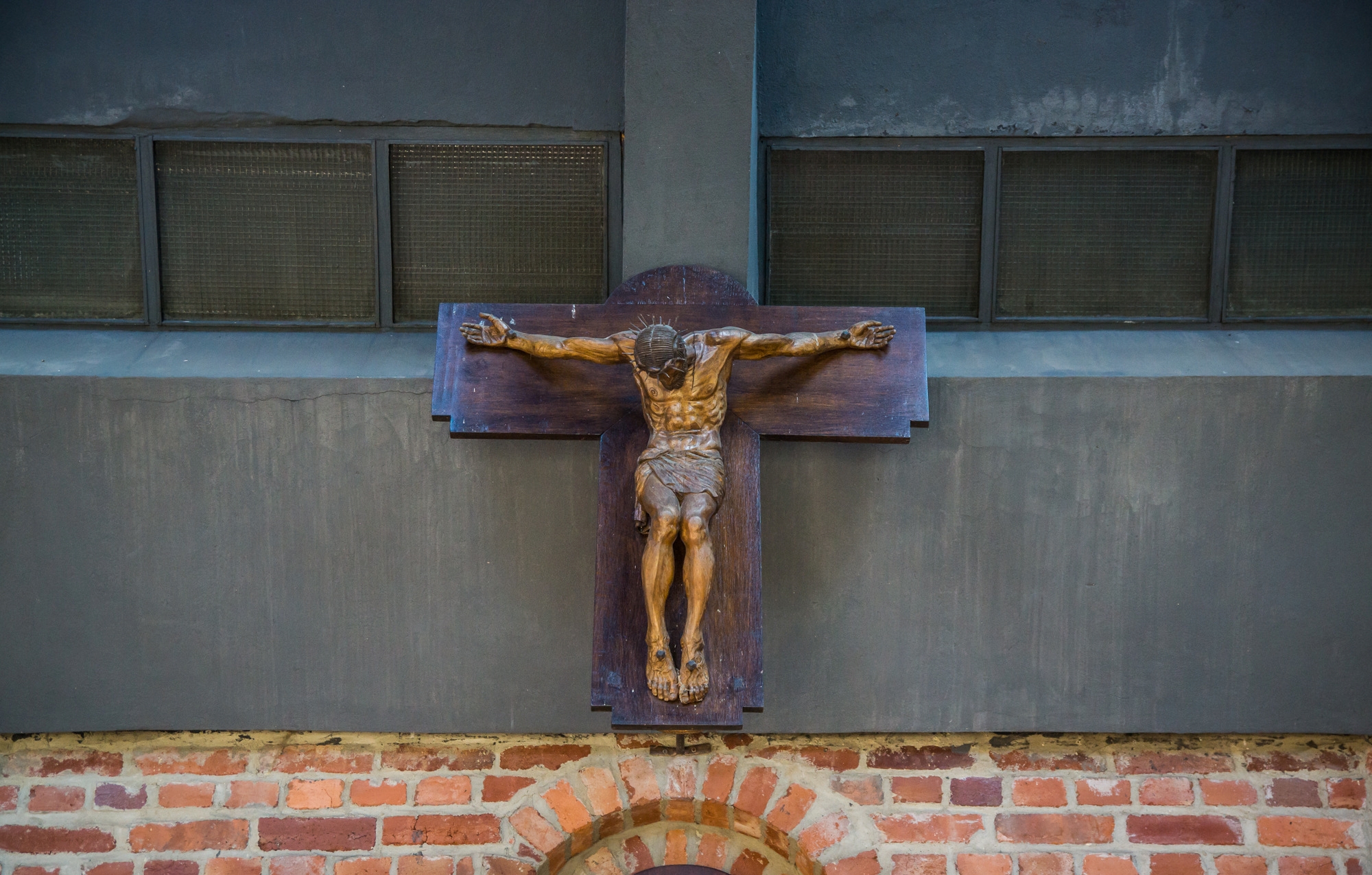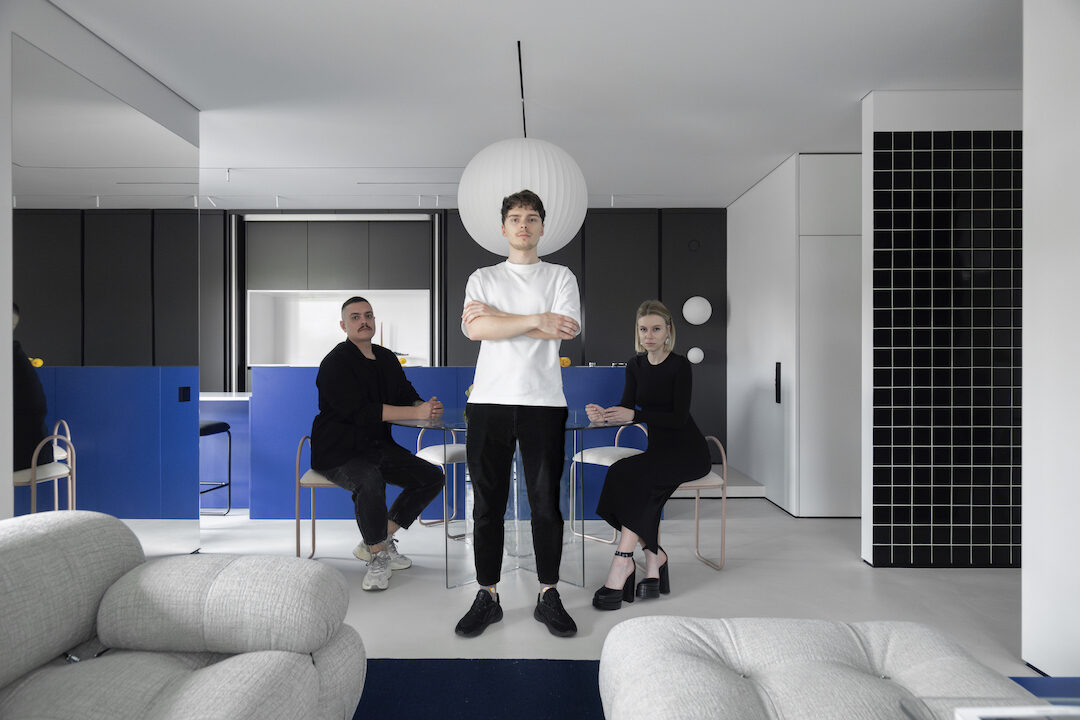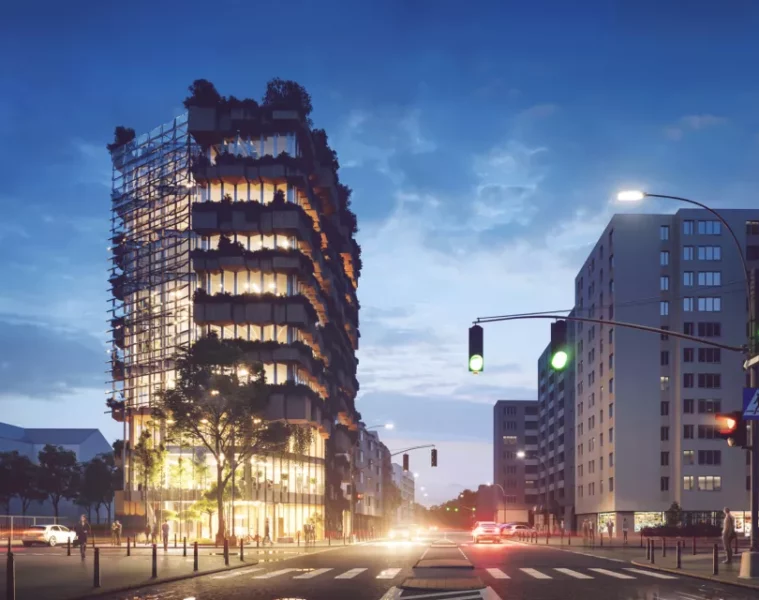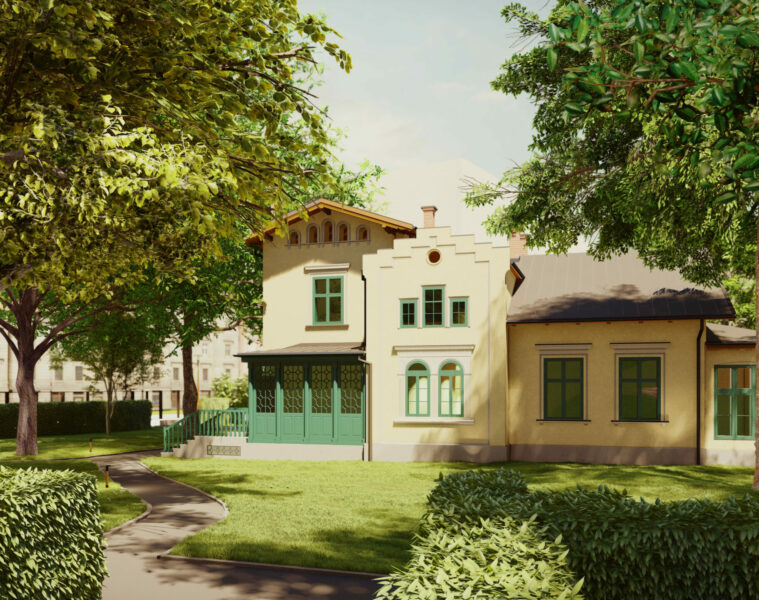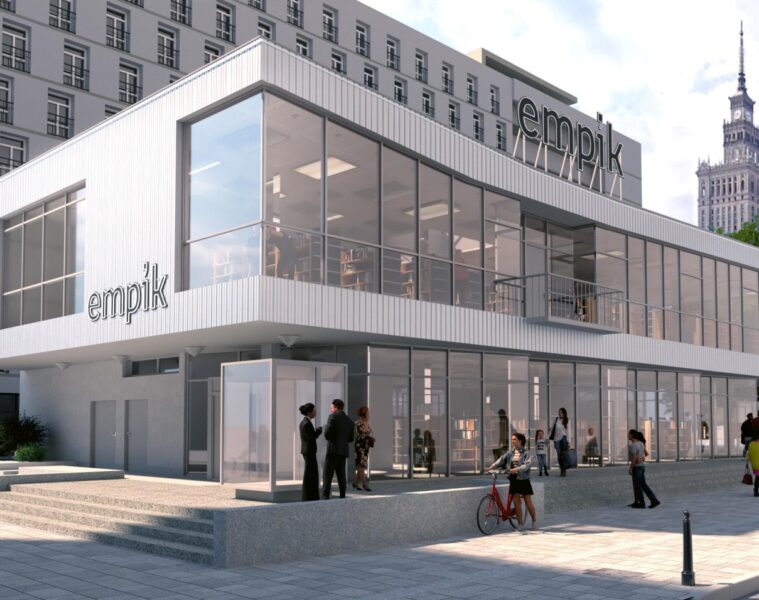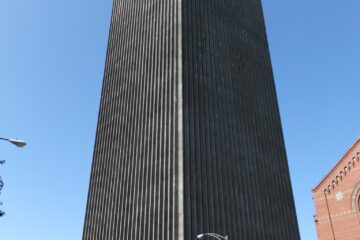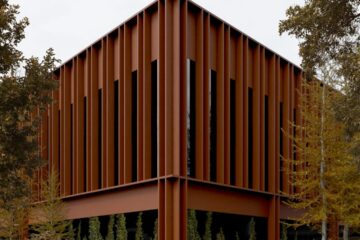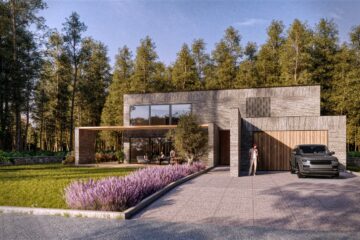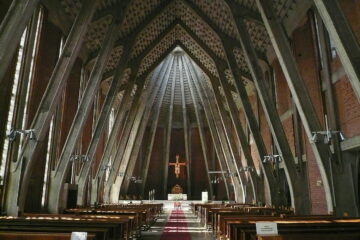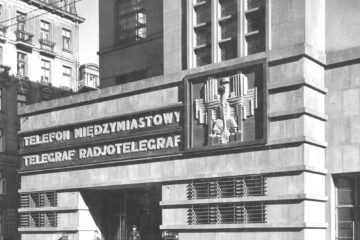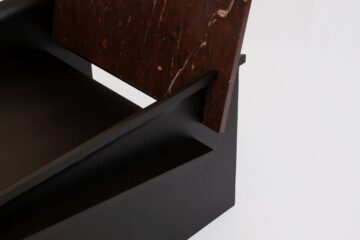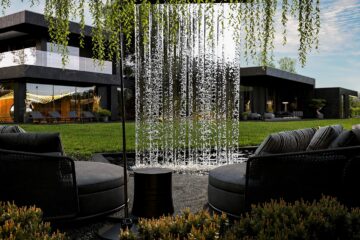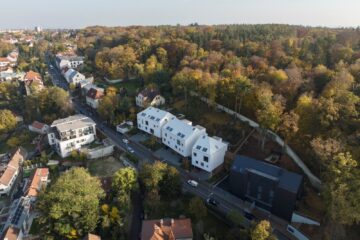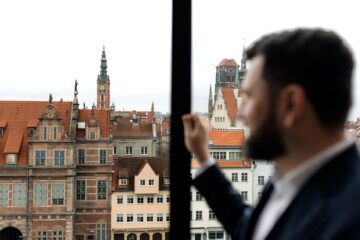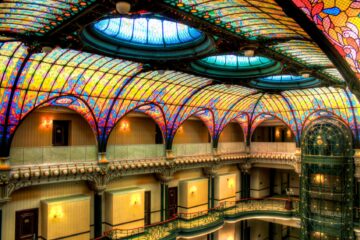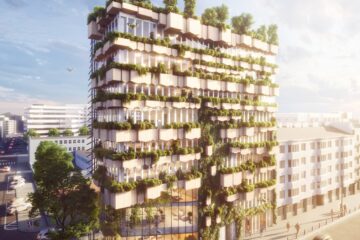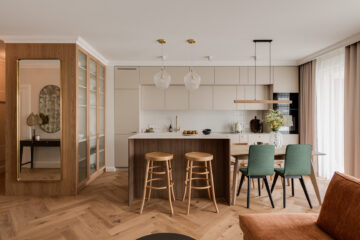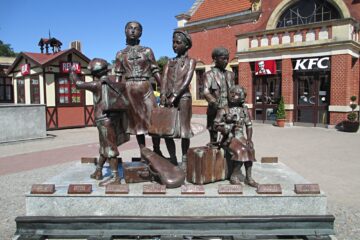The Church of the Holy Spirit in Tychy is undoubtedly one of the most original and interesting religious buildings built in post-war Poland. The temple was designed by Stanisław Niemczyk, who is called the ‘Polish Gaudi’, and is decorated with polychromes by Jerzy Nowosielski. The late-modernist building was completed in the early 1980s and was entered in the register of monuments in December 2019.
Permission to build the church was obtained on 20 July 1976. Work began in the spring of 1978 and was led by Father Franciszek Resiak. The main designer and author of the interior furnishings was the architect Stanisław Niemczyk. The engineer Jerzy Manjura also collaborated on the project. The church was consecrated on 11 September 1982. The building and its surroundings were entered in the register of historical monuments (reg. no. A/589/2019 of 18 December 2019) due to its architectural qualities and unusual paintings in the interior.
Church of the Holy Spirit in the 1980s Source: Tychy City Museum
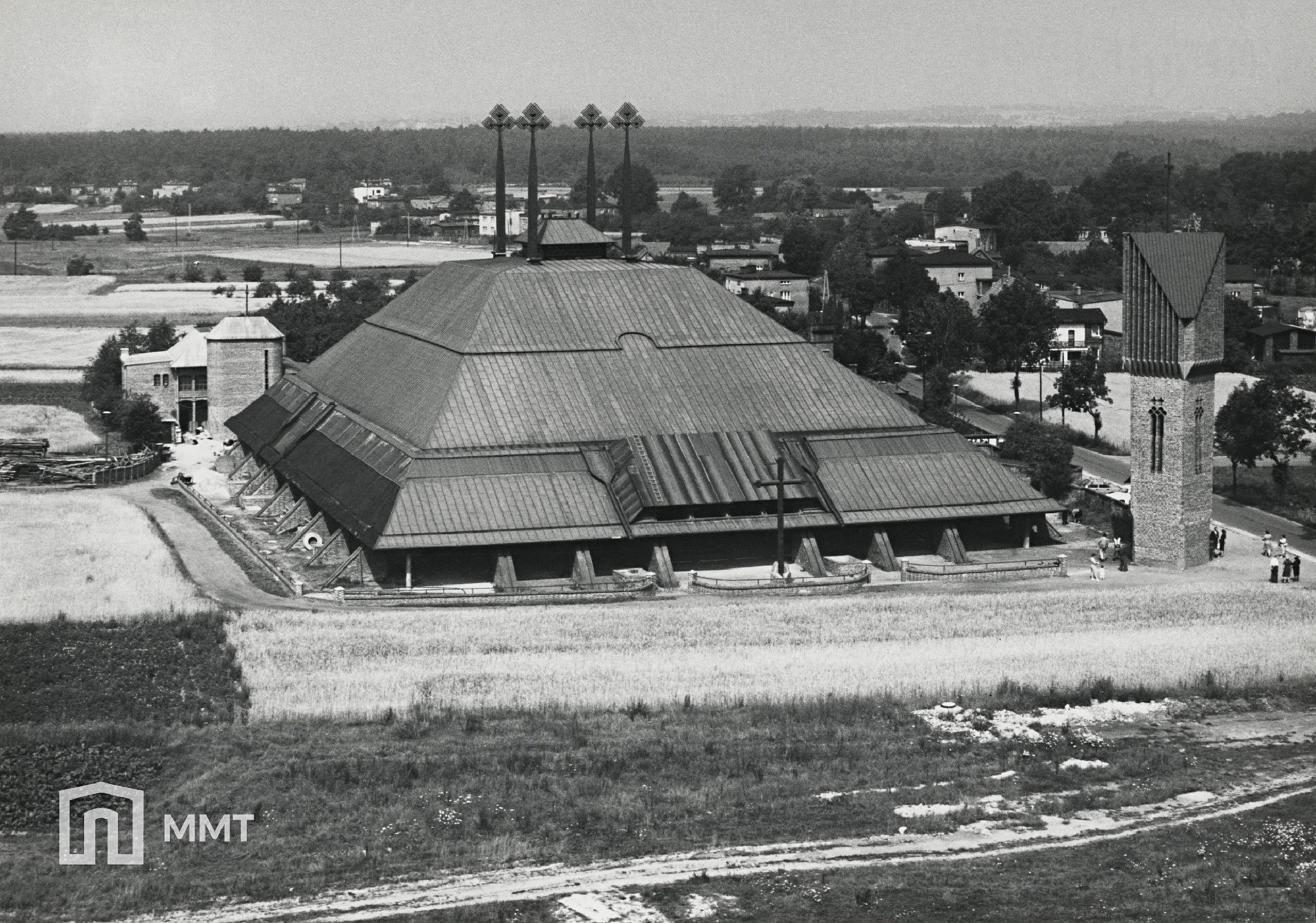
The 1,425-square-metre mass of the church, in the words of designer Stanisław Niemczyk, symbolises a tent – ‘the first temple of the chosen people’. Others look for in it a resemblance to a barrow or even a heap so characteristic of the Silesian landscape. The church is built of brick on a central plan, its rectangular nave is surrounded by cloisters. The whole is covered by a massive roof supported by reinforced concrete frames. With its dominant form, the side walls are almost invisible. In the middle of the roof is a skylight to light up the nave. The entire structure is crowned by four openwork crosses.
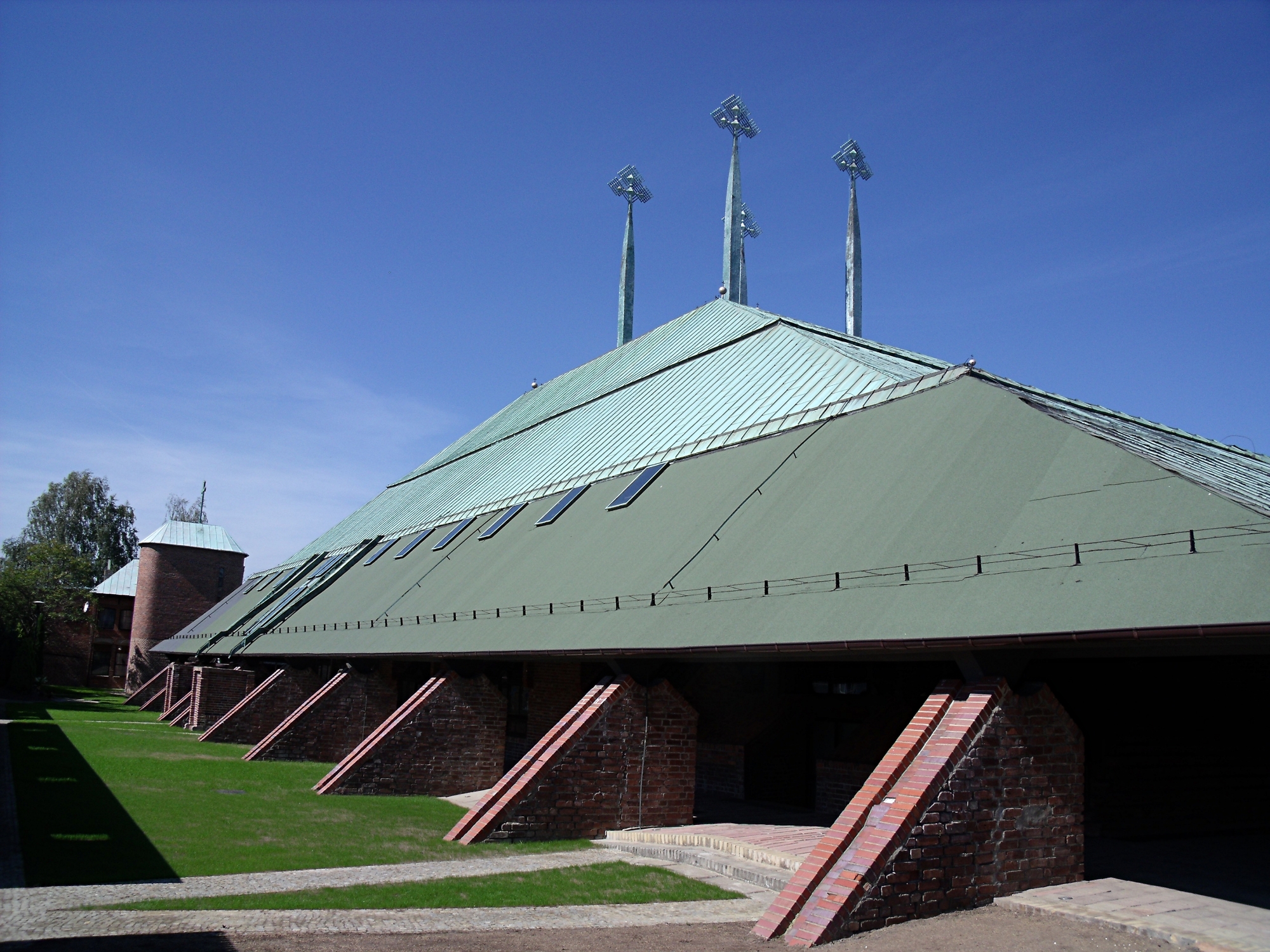
The architecture is saturated with symbolism – various forms of the cross are hidden on the floor and walls of the cloisters, and the same motif is also found in the windows, doors and fence of the church. The handles are in the shape of the Holy Spirit dove (all the details were designed by Stanislaw Niemczyk). The vertical axis accentuated by crosses through the connection between heaven and earth symbolises the sending of the Holy Spirit. In addition, the vertical axis is emphasised by the stream of natural light that enters through a skylight in the roof, then passes through the glazing in the floor (in the chancel in front of the altar) into the chapel on the lower level. The crosses were originally intended to be painted in four colours symbolising the human races (white, yellow, red, brown) and the unity of the Church, but this intention was not realised.
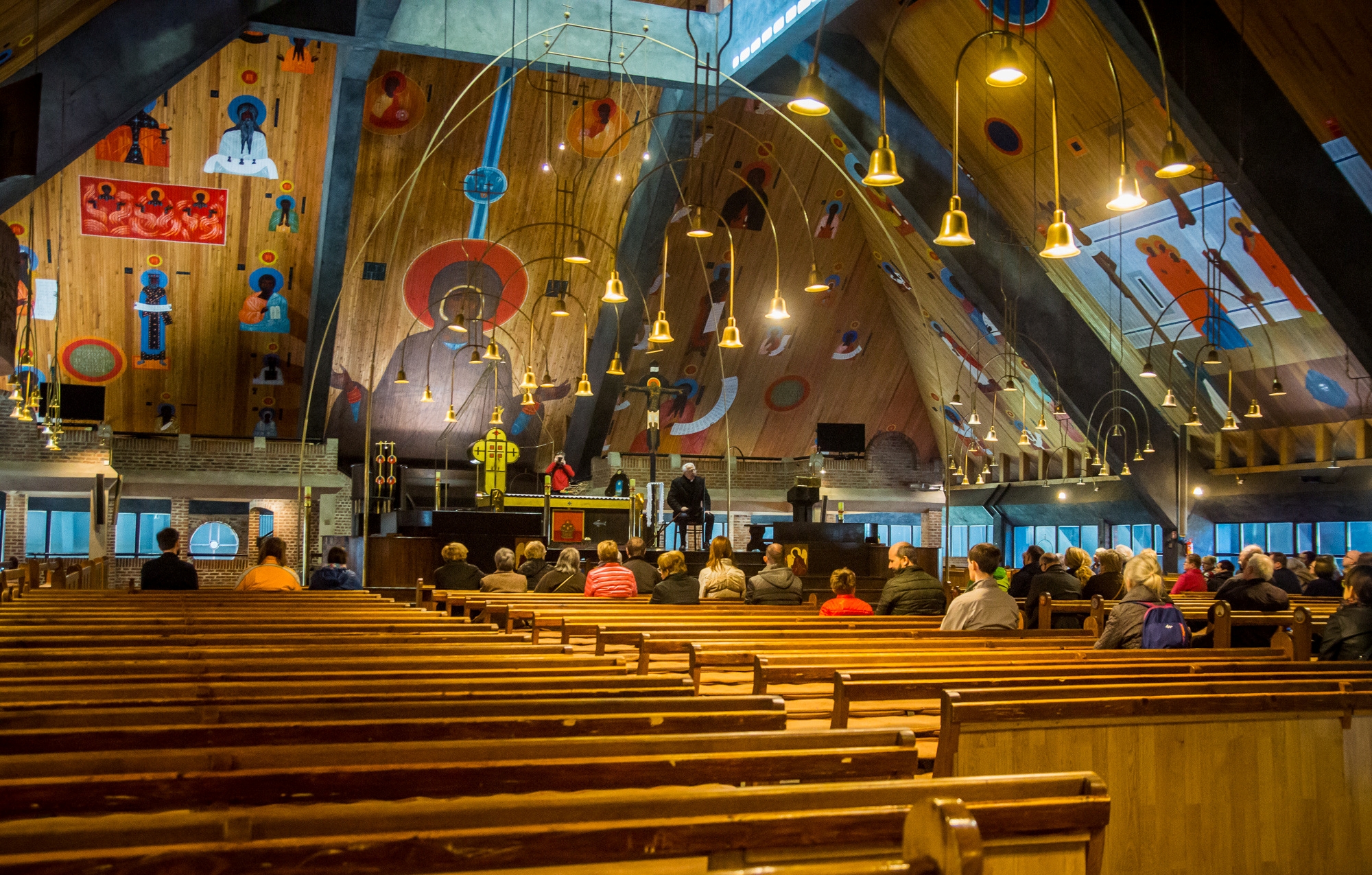
The interior roof slopes are lined with boards and decorated with polychrome work done in Byzantine style by Jerzy Nowosielski in 1983-1986. The altar is located in the middle of the nave, on a raised platform. It is dedicated to St Francis of Assisi. The cross near the altar was designed by Stanislaw Niemczyk. The front of the altar and the cross are also decorated with paintings by Nowosielski. The pulpit was made, like the altar, of black oak. The canopy over the tabernacle was built by Tadeusz Leszczyński and Zygfryd Paszek. It consists of brass tubes surrounding the tabernacle in the shape of a cross. Above it hangs a sculpture by a locksmith named Poppe – a gilded dove. The chandelier is in the shape of an inverted menorah, made by Krzysztof Paszek.
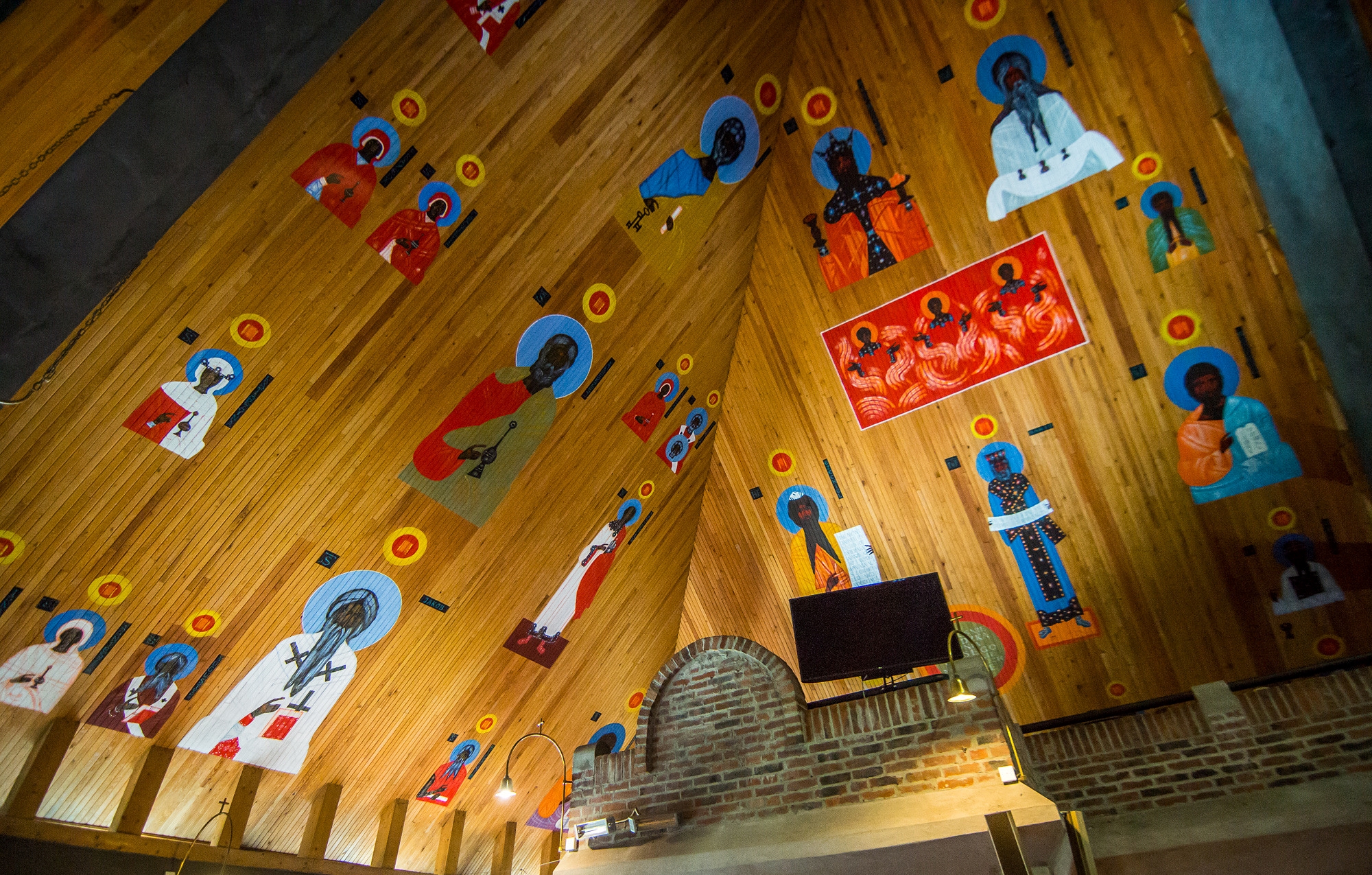
The baptismal font, which also serves as a stoup, was placed at the main entrance. Above it, a reinforced concrete canopy in the shape of two interpenetrating arches was made. The interior of the church is filled with mysticism and creates a unique atmosphere for prayer, and the building as a whole has been recognised and awarded by, among others, SARP and the popular British magazine Dezeen. The church is surrounded by a brick wall. There is a bell tower in the north-east corner. On the axis of the main entrance, a mission cross is placed on a hill to symbolise Mount Sinai. On the west side, a vicarage and the Religious House of the Elizabethan Sisters were built.
Source: duch-tychy.pl, metropolia.slaskie.travel
Read also: Architecture in Poland | Sacral architecture | Tychy | Architecture of the Polish People’s Republic | Modernism

